It’s quite honestly impossible to describe Moscow. It’s a city of wild contrasts – glass skyscrapers right behind the Soviet-era apartment blocks (though it’s not as wild a contrast as Hong Kong, to be fair); Ladas driving alongside Mercedeses (though the Ladas are becoming vintage objects of art, considering how few of them are left on the road after they’ve mostly been sent to Cuba); the rich living alongside the poor (well… “alongside” is a bit of a flexible definition here), and Louis Vuitton and Chanel stores rubbing shoulders (counters?) with stolovayas (basic, utilitarian cafeterias). That said, I will still try.
My routing this time took me to Moscow via Istanbul. There are four (four!!! take that, New York) airports serving Moscow. In the old days, there was a very clear separation between Sheremetyevo (the “international” one) and the other, “domestic” ones; but with growth of passenger traffic, it became a free-for-all, and now everyone flies everywhere. The busier ones are Sheremetyevo still (which houses most of the Communist Bloc traffic, such as LOT, Aeroflot and some of the other Eastern airlines) and Domodedovo (which houses most of the Western Star Alliance, as well as S7 Siberian, one of the more “international” Russian airlines, and a oneworld member). Vnukovo, which is where Turkish Airlines flies, is a more low-volume airport, and it houses a bunch of weirdass airlines you’d never find anywhere else (like Syrian Air, Mahan Air and some other oddball ones), plus it used to house Transaero, the airline that Aeroflot bought for $1 in 2015.
Anyway, all this to say that when I landed in Vnukovo, it was dead quiet. There were no people anywhere, nothing was moving, I almost felt like I landed in a museum. This was the arrivals hall:
The customs agents actually seemed surprised to see me – they were playing cards, or otherwise being indisposed, and they almost looked annoyed that I had arrived (though realistically, I was just a harbinger of another 200 people to come off the plane, since I was off first).
Anyway, formalities done, I hopped into a taxi and went to the city. I was staying at the Intercontinental Moscow; I was trying to decide between the St-Regis and the IC, but finally decided to go with the IC for one reason or another. They gave me the Pushkin suite, which at the time, considering the exchange rate, was something like $20 extra. The opulence was everywhere; after all, the hotel was in the price bracket of the top rung, and had to look as such.
The main lobby:

The entrance:
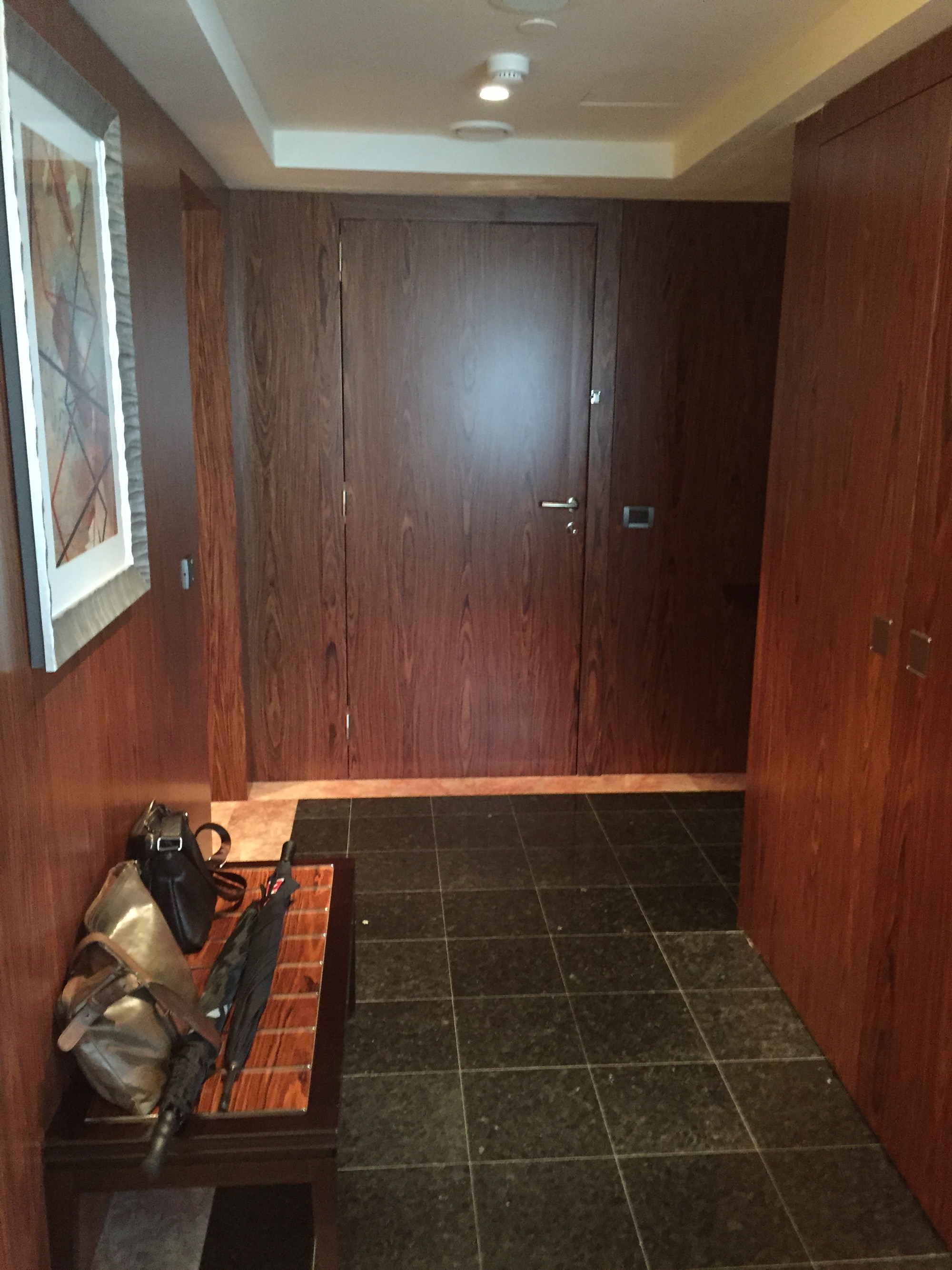
The main living room:

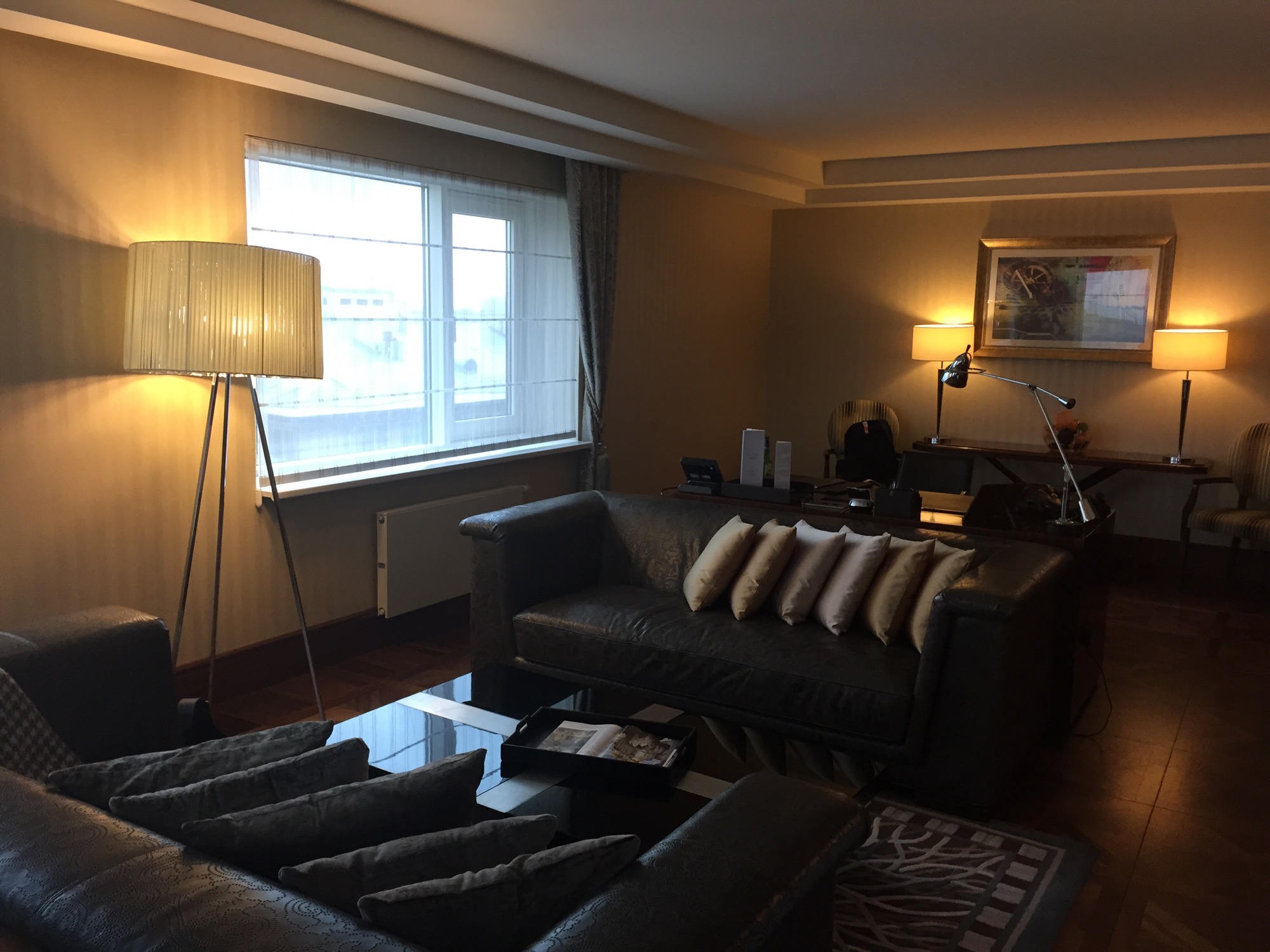
The pretty big bedroom:
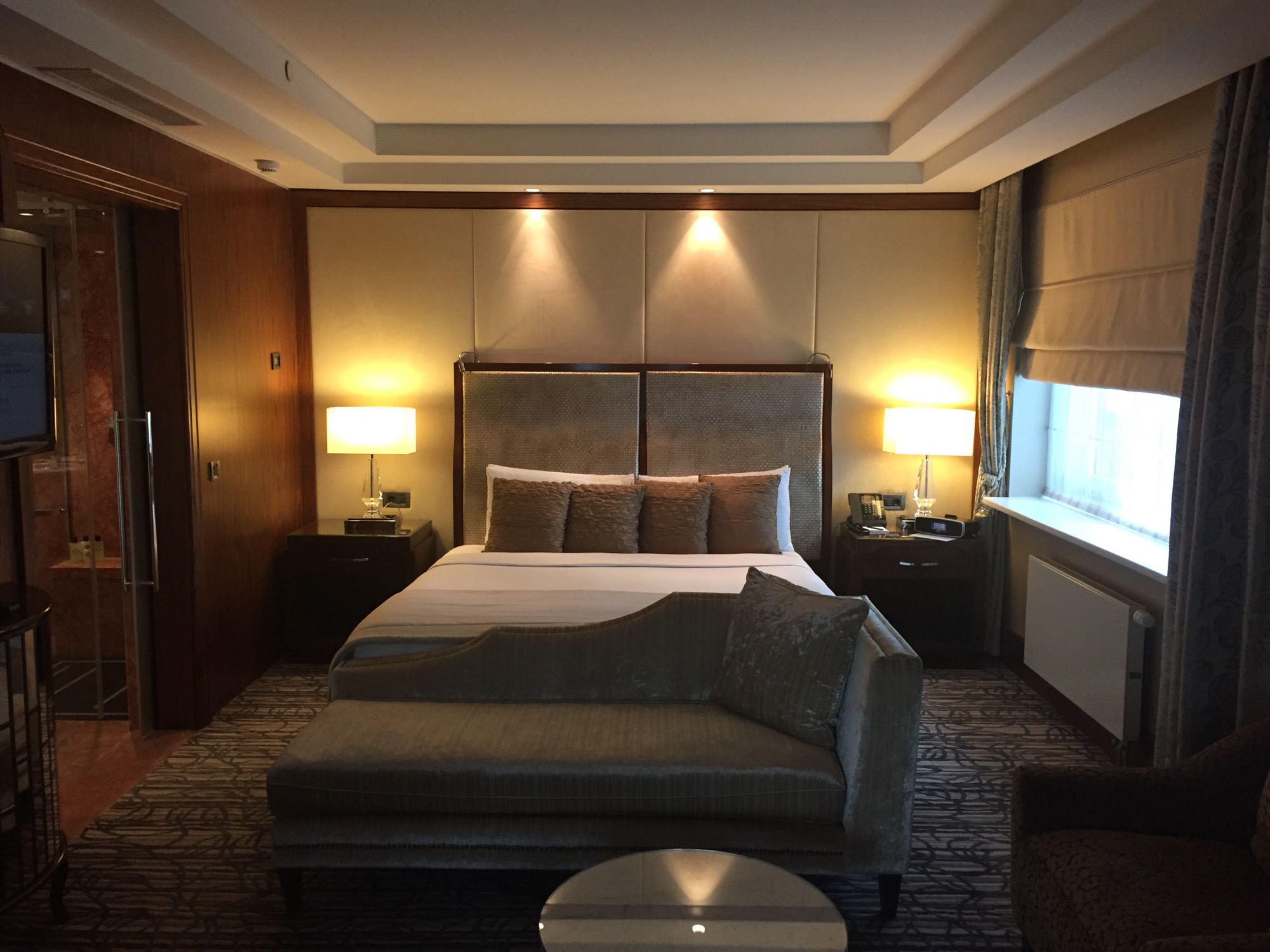
And the needlessly massive walk-in (waltz-in) closet:
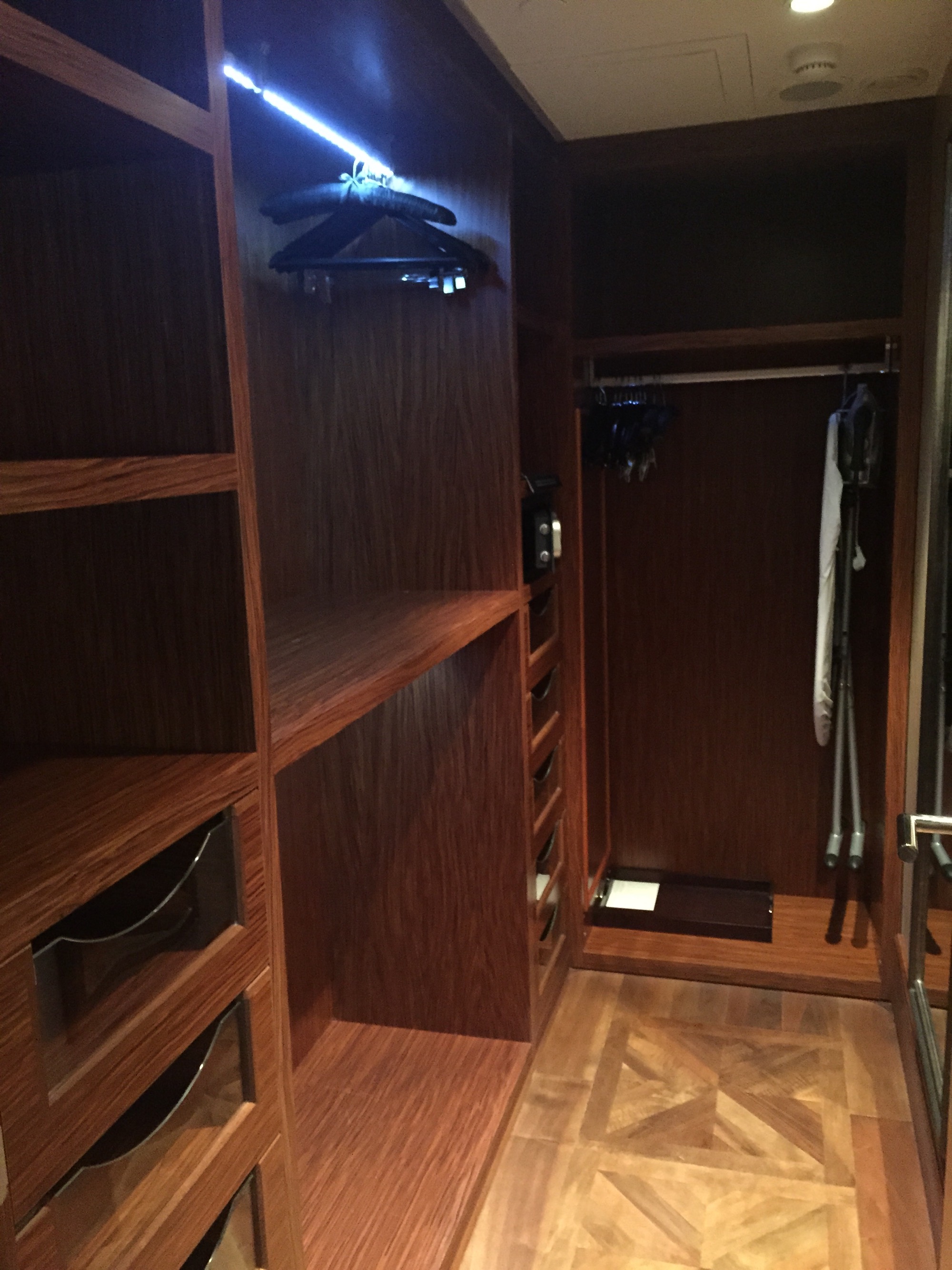
The critically important feature: the minibar. To my utter shock, 1) consumption is free for everyone (so much for Royal Ambassador!) and 2) the contents are a joke. Beers, and that’s all. I later read a blog entry by someone else who said they complained, and their minibar was instantly upgraded to a more respectable selection – but I didn’t think of doing that, so beer it was.

I mean, seriously, Russia, what the hell.
The bathroom was all marble:

Some designer snacks and a bottle of wine came, to somewhat compensate for the paucit minibar.

It was also interesting to note what was in the closet. Each country has a fear, or at least a wariness, of something; and most have something in the closet to defend from that scary thing. Japan has helmets against earthquakes. North America often has umbrellas against, I don’t know, rain or snow. Russia has gas masks.
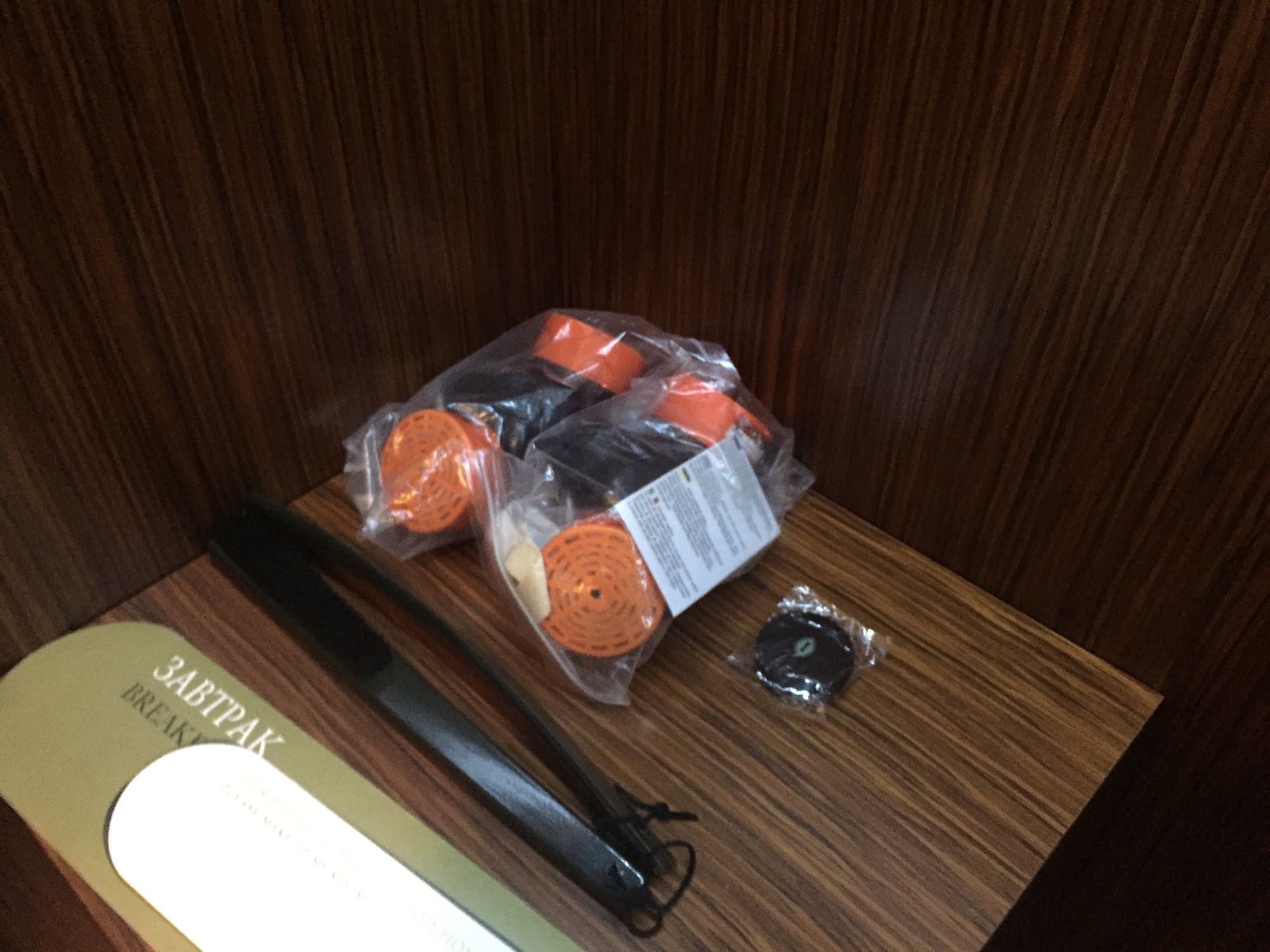
Anyway, enough about the hotel – there’s far more to see in Moscow than the Intercontinental, obviously. Just before I left, I took a picture of the traffic outside (it was morning, so morning traffic):
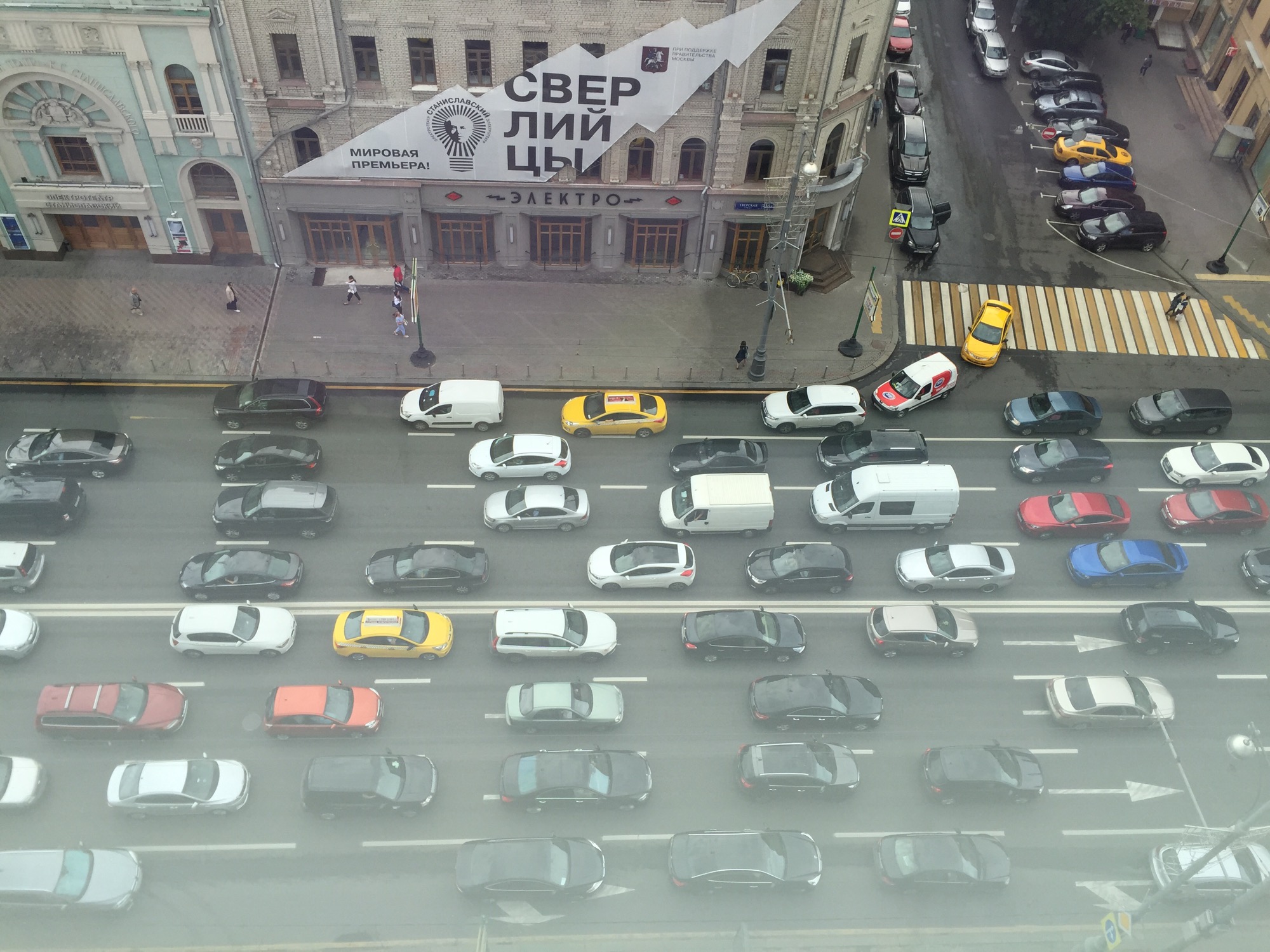
Pretty much right after consuming most of what could be consumed in the minibar and the general vicinity, I went for a walk around the neighbourhood. I was interested in what the city looked like, what the people looked like, what the cars looked like. I’ll start by stating the obvious: there are a lot of Range Rovers in Moscow. In fact, there are so many Range Rovers that I will make this post an informal challenge – you are challenged to count the number of Range Rovers (or Land Rovers, those work too) in any picture that features a street. I’ll help with a running tally. You’ll be shocked.
Just a random downtown street. Leaving aside the fact that there are two Range Rovers in this picture, what is interesting is the building on the right. You may or may not know this, but during Soviet times, the government gave free apartments to everyone. Of course, since everyone was equal, everyone received equal allocations of apartments: some in Siberia, some in Kamchatka, and some in downtown Moscow. This particular building housed most of the cosmonauts of Russia: the plaques on the wall list who lived there. Of course, today, completely unrelated rich people have taken over most of these apartments, renovated them in tasteless modern chic, and moved out to Monaco and just hang out on their boats most of the time, but these buildings do really contain some long history.
Next up is an interesting collage of old vs. new: I did mention that Ladas are somewhat defunct (or more specifically, they’re either in the villages or in Cuba) – but you do come across them sometimes. And there’s a Range Rover, as well.
My next visit was to the VDNKh. In short, it is a massive collection of national achievements – having been built between 1935 and 1959, it went through a few evolutions, but was basically designed to show off the achievements of the republics constituting the Soviet Union (and the country as a whole) – aviation, construction, mechanised equipment, and all sorts of things. Also, fountains. The Russians love fountains. I’m not sure if they love them more, or less than Range Rovers, but fountains are everywhere in Moscow, and they’re usually rather intricately designed and fairly spectacular.
Of course, at the entrance (the Propylaea), there was an Andean-type music band. I don’t know how they manage to be in every country in the world at the same time, but I swear to God, I feel like exactly the same guys are in Tokyo, Montreal, Moscow and New York at the same time, and that’s only the cities where I saw them – there are probably a half bajillion others, as well. Truly, it’s quantum physics at play: they are present in multiple locations at the same time, and yet nowhere.
Once you walk through the gate, you see the massive arch that has “Union of Soviet Socialist Republics” inscribed on it, Lenin’s statue, and really, everything how it was a half century ago, except Russian and not Soviet flags. It’s absolutely massive, and hugely imposing.
Moving on, there is the Friendship of Nations fountain. (Remember? Fountains?). It represents the friendship of all the peoples of the Soviet Union (and yeah, the other countries can go to hell).
Incidentally, it seems that the hipster virus is doing just fine in Russia. It’s even feeding on the future generations.
The Armenian pavilion.
Seriously and no joke, though, the level of detail on the top of the pavilion is absolutely breath-taking.
Karelian Republic pavilion – same comment on the detail.
And here’s another incomprehensible global trend: chestnuts. I know I must be in the minority (mostly because I’m complaining about this, and those people are making good money doing it, which means the other 99.9% of the population must love the damn things), but why does everyone grill those things?! Growing up, I could think of chestnuts as nothing more than things you throw at people – it has never occurred to me that you can eat them, and the one time I did try to eat them, they had this gooey shit in side that was absolutely inedible, and that was the end of the chestnut love affair for me. Apparently, though, it’s alive and rather well in the rest of the world (though I don’t think those people are buying it – they look pretty skeptical if you ask me – then again, they’re Russians. They’ll stand there looking mega-skeptical, and then probably just buy it anyway).
Here’s another fountain!
The Ukrainian pavilion:
The Cosmos pavilion (and the Vostok rocket):
Closer-up shot of the rocket:
A Yak-42 plane, which was basically the Soviet version of a flying bar stool. It wasn’t comfortable, quiet, or enjoyable to fly, but hey, it was domestically made, so Boeing, here’s a finger to you. Or something.
This one here has a sad story. Sad not in the sense that something bad happened to the vehicle itself – but the general story of the Soviet collapse. This here is obviously the Buran – the Russian equivalent of the Space Shuttle. A space vehicle that was manifestly better than the Space Shuttle, and yet one that never really flew, because of this, and that, and the third thing, and then the collapse happened, and so on – but the sad story here is that all of them were either destroyed, or left Russia. The only one that actually flew is the one … not in Russia, but in the Speyer Museum in Germany (as I complained in the post about that museum). Somehow when things started falling apart, most “interesting” things packed up and left to other countries, leaving design prototypes such as this one behind, which just shows how little control the country had of its assets during the turbulent 1990s.
After this, I decided to go to the “nostalgia” museum. You see, Russia has a great fondness for nostalgia. I don’t know if it has to do with their vast expanses of nothing (also called step’), or just general melancholy, or what – but as a culture, it’s rather common. Leaving aside the persistent manifestation of nostalgia towards old times (I mean come on, the Russian anthem is the Soviet anthem, with slightly modified words), there is also a tendency to collect and show antique objects that show the glory of the days not so long ago gone by. So there’s a museum of Soviet nostalgia, which houses some of the objects that the previous generations grew up with (but objects that are not so old as to make people go “yeah that’s old junk, don’t care”, as most of the Victorian or Egyptian artifacts do). At the entrance to this museum is a collection of old soda machines and newspaper machines.
The museum is rather peculiarly set up, with a bunch of cardboard boxes (for some odd reason, as I don’t quite think that cardboard boxes per se represent any sort of nostalgia), and a bunch of old arcade machines and old computers sitting about reminding people of how the world used to look like when you used a tape recorder with a 5-pin DIN connector to load data, and Internet was something that was a capitalist swear word.

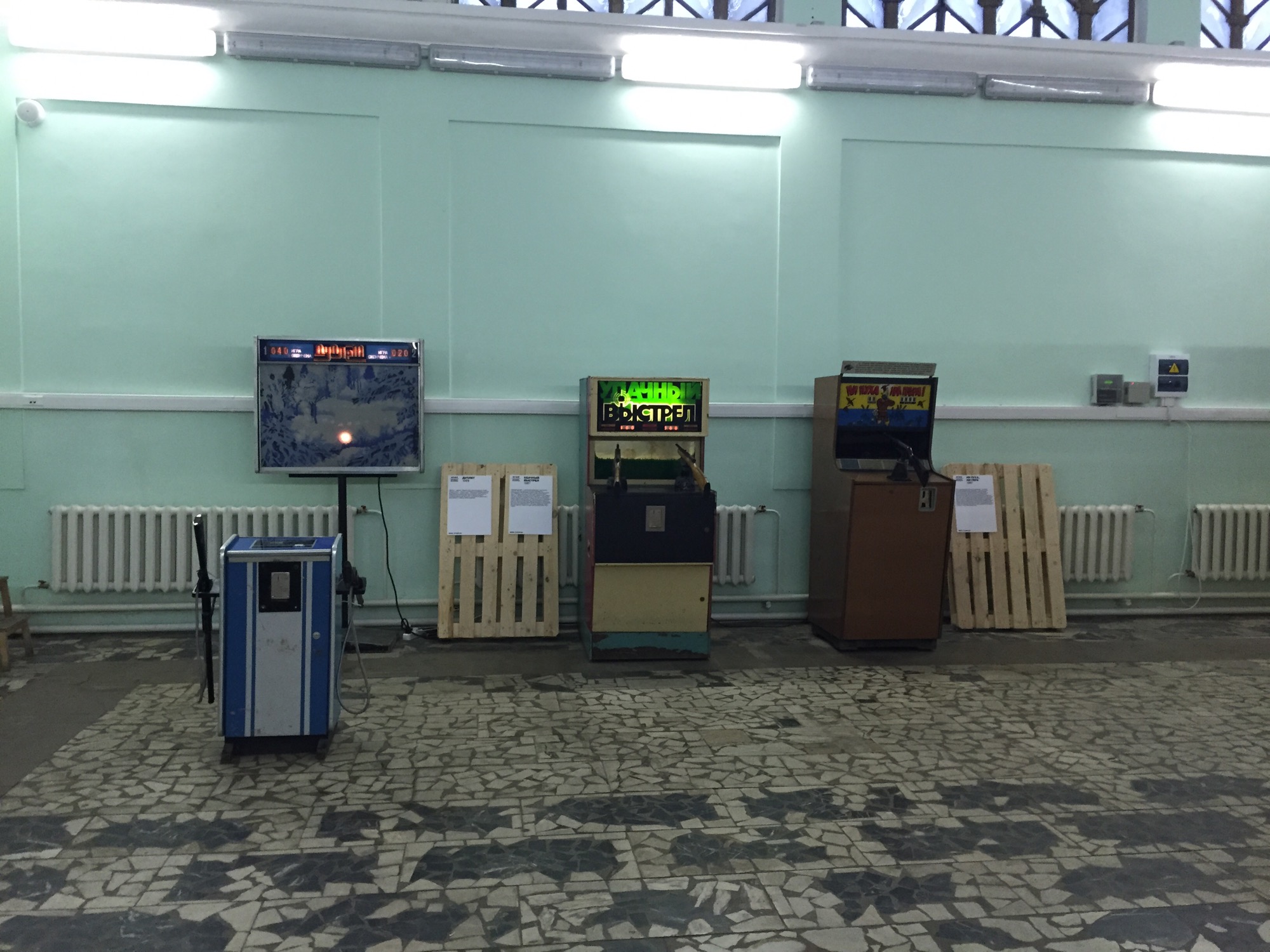
The Soviet arcade machines were rather interesting, in fact – they were pretty much purely mechanical, but they worked well enough that you could really get into the game. I liked the fact that the owners did not convert them to modern day tokens – at the entrance, you paid some token amount of money (a dollar or two) for a handful of 15 kopeck coins (and a single one was usually enough to play), and you were free to spend as much time as you want going around trying the various machines. Neat way to have someone experience a past they never lived, and a world they do not know. (is the melancholic atmosphere rubbing off on me?).
There was also a number of old computers. Ataris were well represented, of course:

As was the Nintendo:
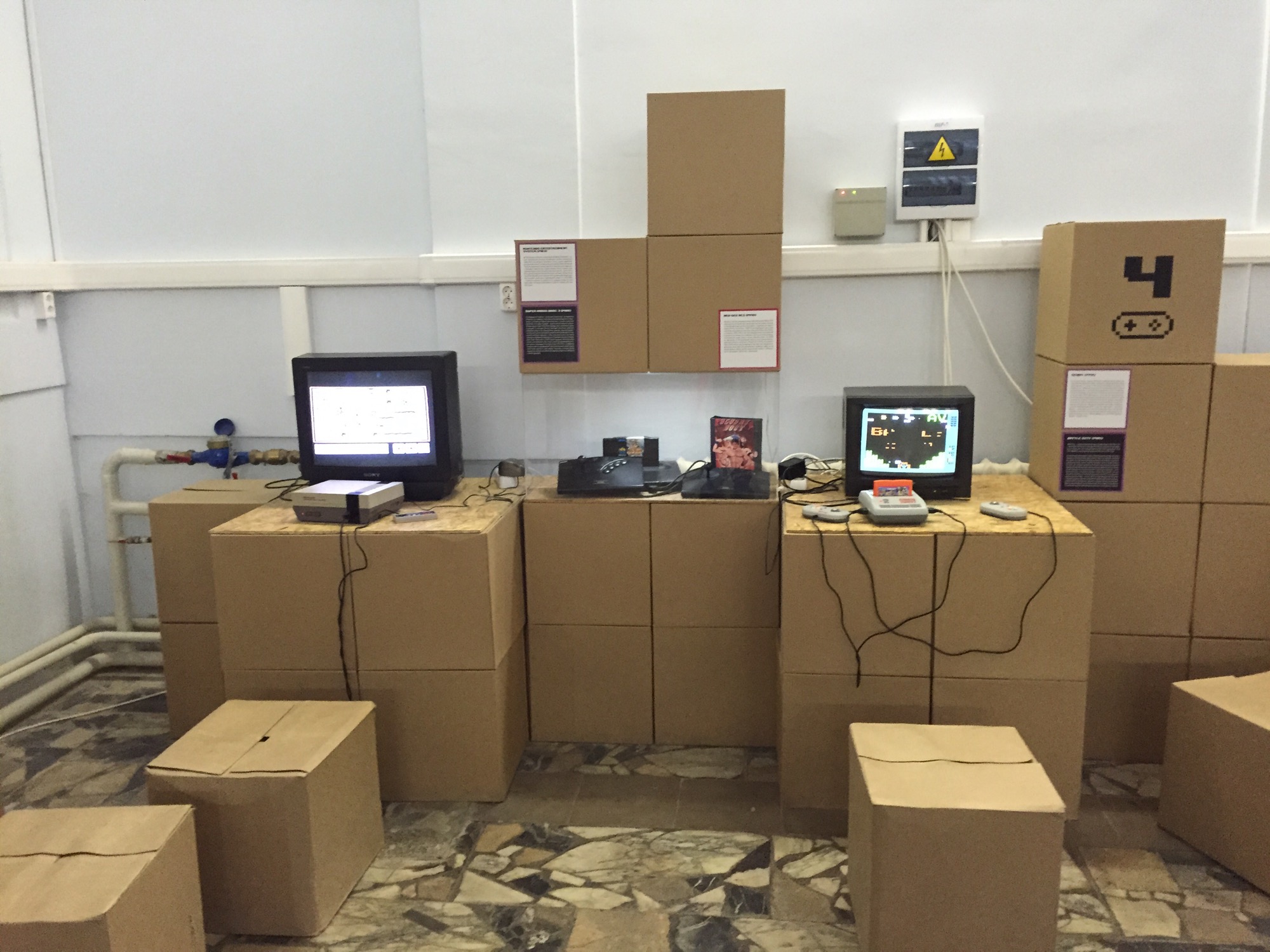
Some other old equipment that I didn’t recognise:
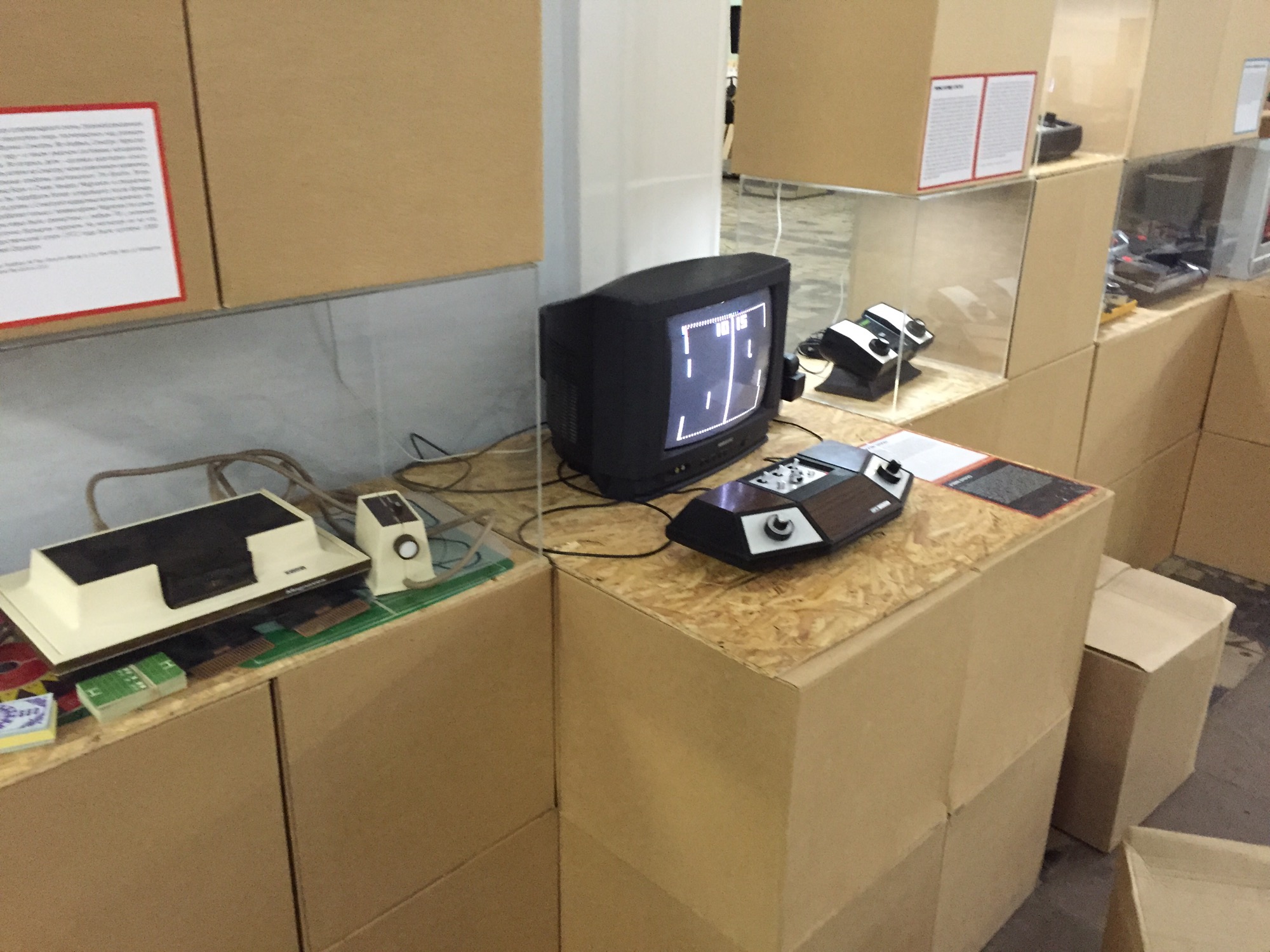
And of course a bunch of old PCs. Some were running Wolf3d, some Doom… and this is where things got really weird: there were not one, not two, but three Oculus Rift devices, one of which a prototype! It was completely mesmerising: I couldn’t but savour the irony that, having travelled around the world, and being involved in technology, the place I am trying an Oculus Rift prototype is in a Moscow computer nostalgia museum. What the f., seriously. By the way, it was really cool.

Following this, it was time to head to Red Square. I literally only had about two days for sightseeing, so I was trying to cram everything I possibly could into as short a time as I could, so this was a blitz – but then again, most of my trips usually are.
On the way to the Red Square:
Once again, I remind you of the exquisite detail.
Just a picture of the street I was walking on.
Wait wait oh oh oh … what’s that? Two Range Rovers. I draw your attention to the fact that every picture that has featured a “street” so far has had Range Rovers in it. I swear on everything that’s holy that this is not intentional – I wasn’t looking to take pictures of Range Rovers, I don’t even particularly like them!
Walking through a park, saw an amusing scene:
This obviously immediately reminded me of Tom Lehrer – Poisoning Pigeons in the Park.
And hey, there was a fountain here as well!
To get to Red Square, I took the metro. The Moscow metro (and, by extension, most other cities’ metros – since they were all roughly built around the same time) represent a point of pride for the country, as they are all quite artistically designed, each station is unique, and the artwork is stunning. I wrote about this before in my post on Novosibirsk, which was pretty much a scaled-down version of the Moscow metro; of course, this is the real deal here.
The metro cars are a variety of vintage (1970s and older), old-but-not-yet-vintage (1980s), and brand new rolling stock (boring as hell – bring back the vintage!). Once again, in a bout of nostalgia, although many have been refurbished to a “modern” version, many have been refurbished in a way as to evoke the feelings of old – the cars are old, the lighting is semi-dim, and really, you’d think that it’s just an old metro car that hasn’t gotten around to the restoration – until you see a plaque that says something like “manufactured in 1960, refurbished in 2010”. More still, some of the trains (notice I said trains and not cars) are actually decked out in themes – such as famous historical events, locations, and so on; unfortunately, I wasn’t able to catch any of those, but I hear they exist.
Since this was a “not quite vintage” car, the interior was sort of redone to modern-day fluorescent bulbs (rather than incandescents).
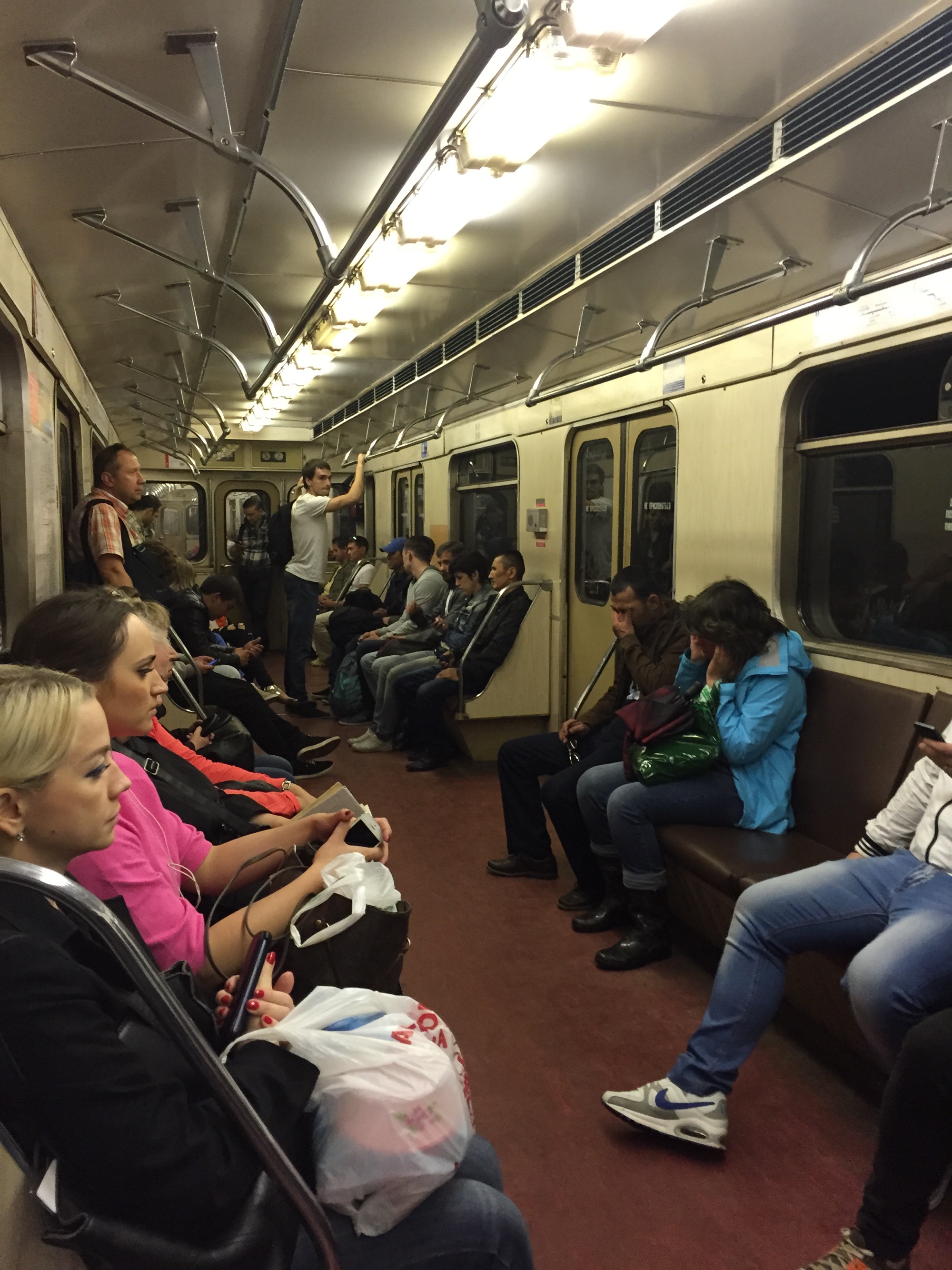
Some shots of the interior of the metro. I must say that I do it no justice: I didn’t get a chance to visit a lot of stations, and they really are rather impressive.
Apparnetly, rubbing this dog’s nose brings luck. So much so that they have to keep replacing the poor thing’s nose as millions of people rub it every day (I’m not sure who the luck is brought to, but it’s most certainly not to the dog).
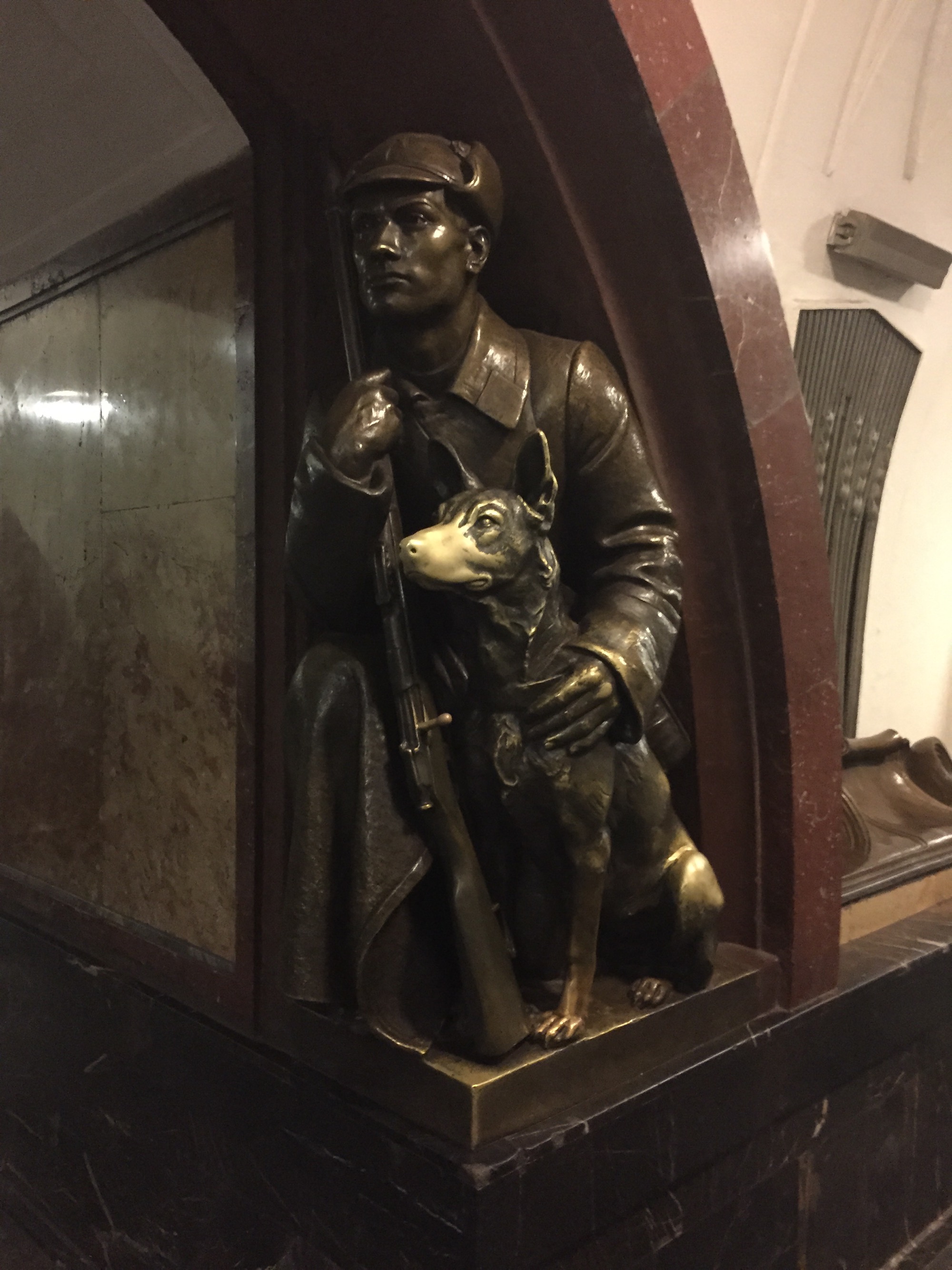
More sculptures:
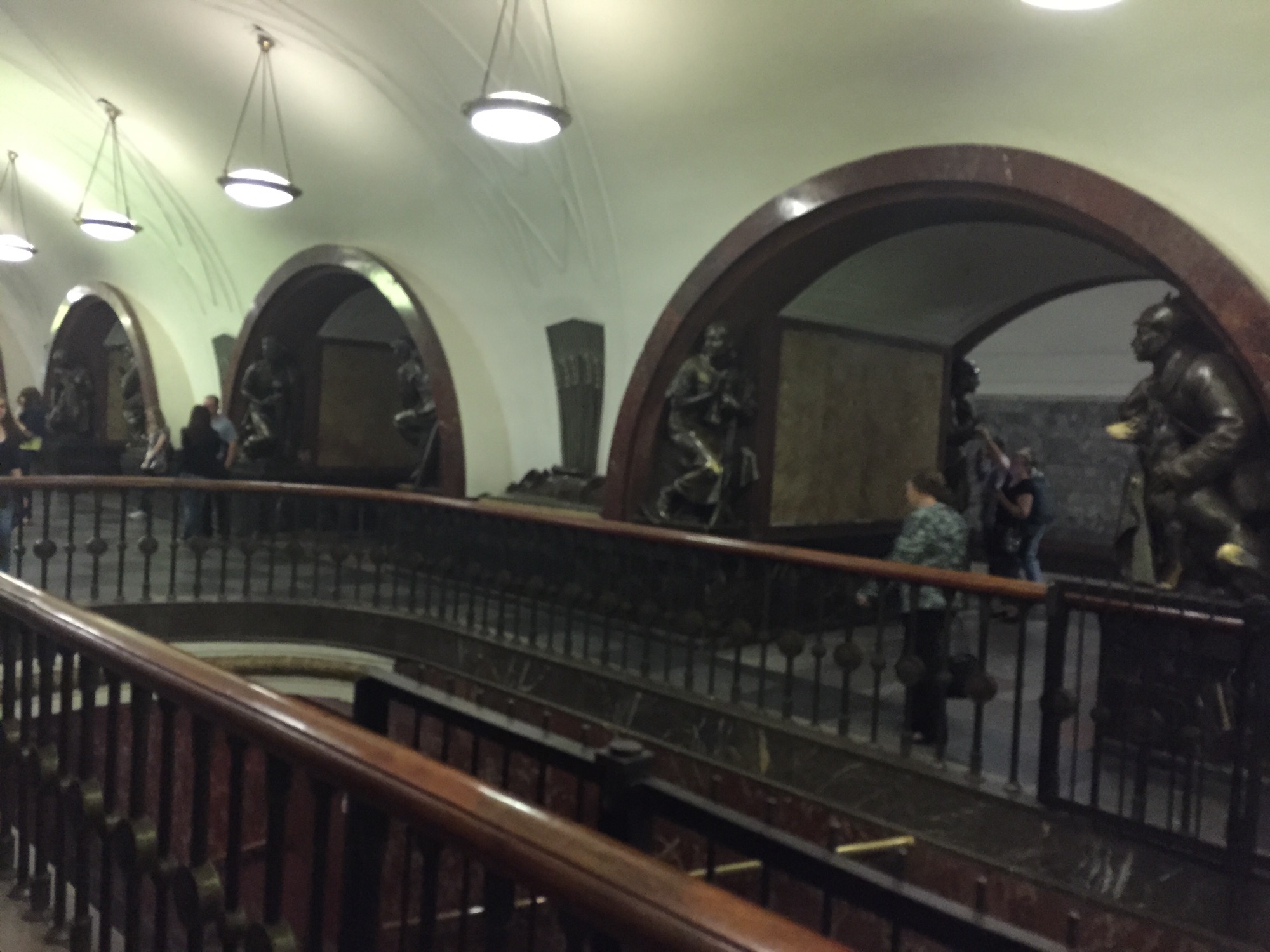
Those ceilings!

Or the marble columns.
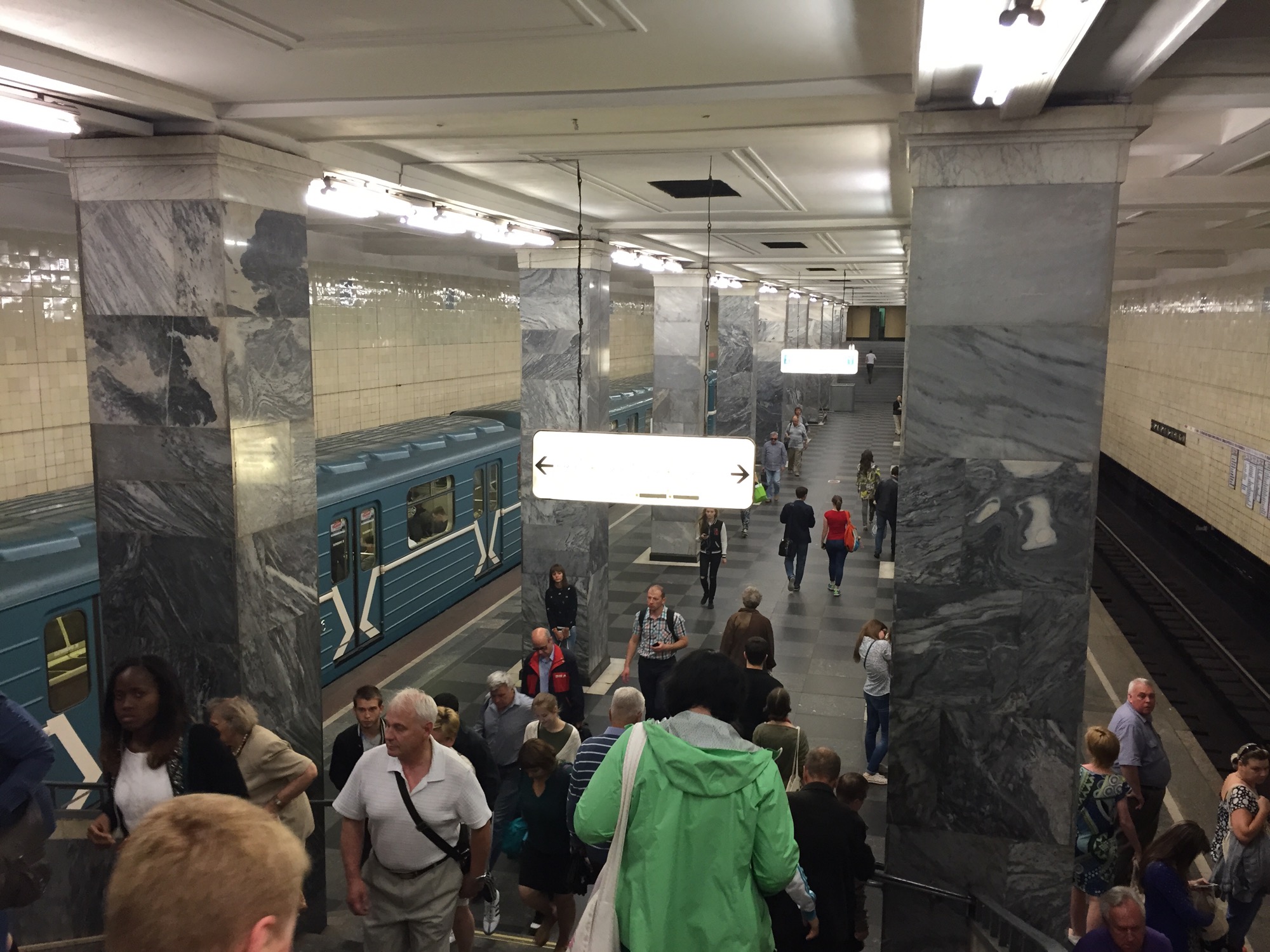
More ceilings.

Incidentally, a comment on the Moscow metro.
You see the timer above? The left one shows the clock, and the right one shows the time between trains. It resets every time the train arrives, and in the middle of the day it would never go beyond 2 minutes and change. There’s actually no visible timetable, unlike let’s say Japan, not because the trains aren’t precise – no, rather than that, they are so frequent that there’s no need for a timetable. During morning or evening rush hour, trains come every forty seconds (yep, you read that right). I mean, the Japanese train system impresses me by its punctuality and organizedness (that’s not a word), but the Moscow metro impresses me by the sheer volume of people (yet interestingly, the Tokyo subway collectively is considered the busiest system in the world, which is fair enough, I suppose).
Anyway, so I got out of the metro to see a statue to Saints Cyril and Methodius, the creators of the Cyrillic alphabet (get it? Cyrillic?).
I walked along a street to get to the Red Square.
… in the picture of which I count not one, nor two, but four Range Rovers.
Incidentally, this was in front of the Ritz-Carlton.
There’s a Land Rover here as well, just in case you were wondering (and a Maybach). So we’re up to what, seven? eight? Rovers.
Passing by the Bolshoi Theatre…
… I at first felt odd that I couldn’t see any Range Rovers despite having a huge parking lot, but then my fears were assuaged: there is one in the right row, but much more interesting is that baby blue Mercedes S-Class with diplomatic plates – that colour, allow me to assure you, is most certainly not a standard catalogue colour. Of course, the array of Mercedes G-Klasses, Porsches, and just “standard” Mercedeses also more than compensates for the absence of all but a single Range Rover.
As I came up to the final street to get to the Red Square….
… yup, somehow, another Rover snuck into the picture.
This is the main archaeological museum.
… and this is the greatest scam in the universe. This is Kilometre Zero – all Russian roads take their kilometer markings from here.
The reason I say it’s the greatest scam in the universe is because someone made up an urban legend that if you stand there, face some way (south? anyway, away from the gate) and throw a coin behind you, something good will happen (I’m not quite sure what the relationship is between luck and Kilometre Zero). Of course, what it actually has done is create a cottage industry of homeless people who fight (fortunately, behind the scenes) for a spot at the table, so to say – so most of the time, when someone throws a coin, the homeless guy will catch it and pocket it (you can see one to the left of the douchebag in the centre, all primed and ready to go). The whole thing is utterly stupid, and is even worse than throwing money into fountains (though I think that’s pretty vile, as well, since someone has to go clean the damn things).
Anyway, just for a point of comparison, here’s Kilometre Zero in Tokyo.
No one throwing coins, no homeless people, nothing. Oh well. Moving on (ha, pun).
Another view of the archaeological museum.
The Mausoleum, where Lenin’s body lies and where it’s freaking impossible to get into because the lines are so long that you have to line up from forever early in the morning, and wait. Nostalgia, remember? Although there’s a good amount of tourists, as well.
The Kremlin Wall itself. Unfortunately, there was some sort of a stage being constructed, so I didn’t get a good picture of the classic Red Square – I hope this wasn’t preparation for that dumb Russian rapper Timati making that awful, terrible video.
And of course, how could I miss what probably is the most quintessential picture from Moscow – the Saint Basil’s Cathedral. No snarky commentary needed – this really is a beautiful church.
On my way back to the hotel, I saw what I guess should be considered commonplace these days – Rome has the centurions (and Julius Caesar with a knife sticking out of his back), Times Square has the Statues of Liberty (and the jumpy Spiderman guy), so why wouldn’t Moscow have Stalin and Lenin in what looks like a state of profound hangover (and a happy tourist who’s getitng a picture of … of … really, how the hell do you explain this back home?! “I had a picture taken with a guy dressed as Stalin”? Because really, why?? On second thought, it almost makes me wonder who’s the one with a hangover here – Lenin, or the tourist).
As I was walking along Moscow River, hey, guess what came out from the middle of the damn river. Did you guess Range Rovers? Well, you were wrong: it was a bunch of fountains.
When I got back to the hotel, I looked out the window and saw a mesmerising sight – the old Stalin buildings, lit up, contrasting with Moscow City (that’s actually what the skyscraper to the right is called). It’s one of those buildings (there are actually seven of these yellow-lit ones, built under Stalin after WW2) where anyone could get an apartment, as long as you were a little (well, a lot) more equal than others. This particular one has been a hotel from the beginning – used to be called Hotel Ukraine, and now it’s a Radisson. Ahh, the tentacles of capitalism.
The street in front of the hotel was no longer gridlocked, and instead, had a quiet, melancholic look about it. It’s Russia, after all.
I went to sleep with great expectations of the next day. Enough cultural stuff, I thought – the next day was to be devoted to seeing cars and planes: I was planning on going to the “retro” car museum (remember – I try to pick up the local flavour everywhere I go, and I already have extensive coverage of the US and Japanese automotive industry, but nothing on Russia yet!), and the Russian Air Force Museum in Monino: an absolutely fascinating look into the glory days of Soviet air superiority. More on that in the next post, but when I woke up in the morning, the view of the Radisson was just as spectacular as at it was at night.

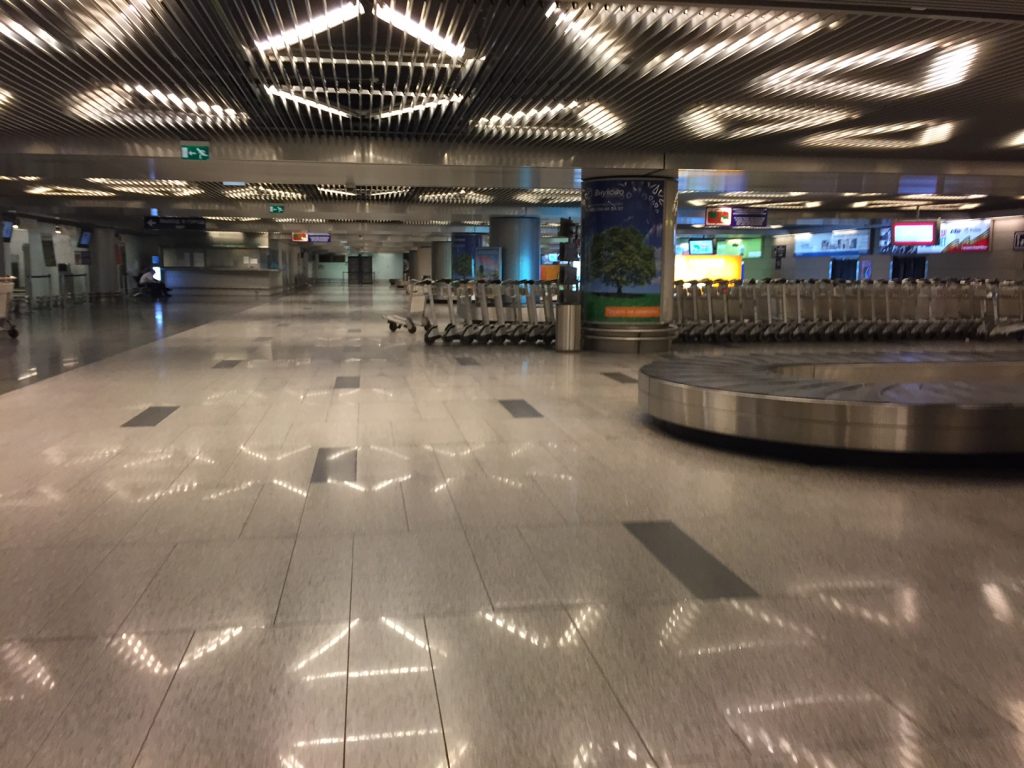
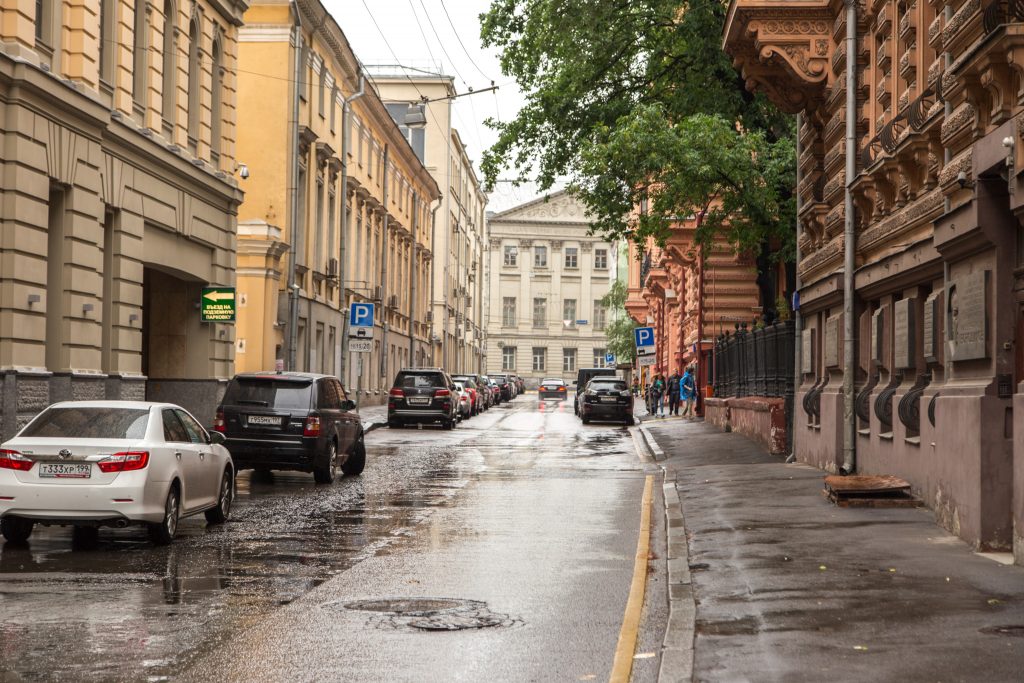
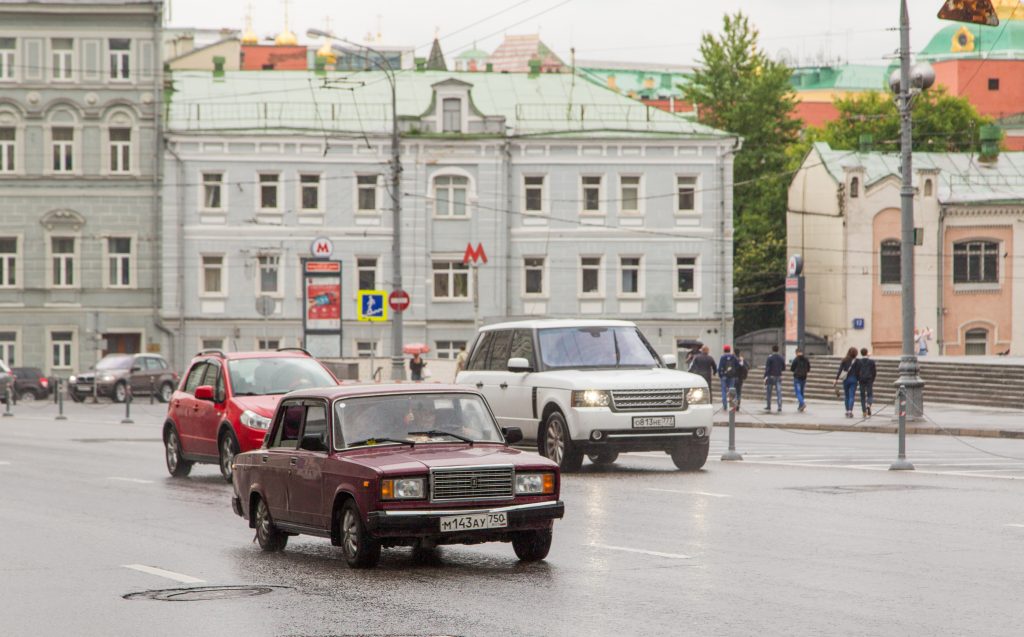
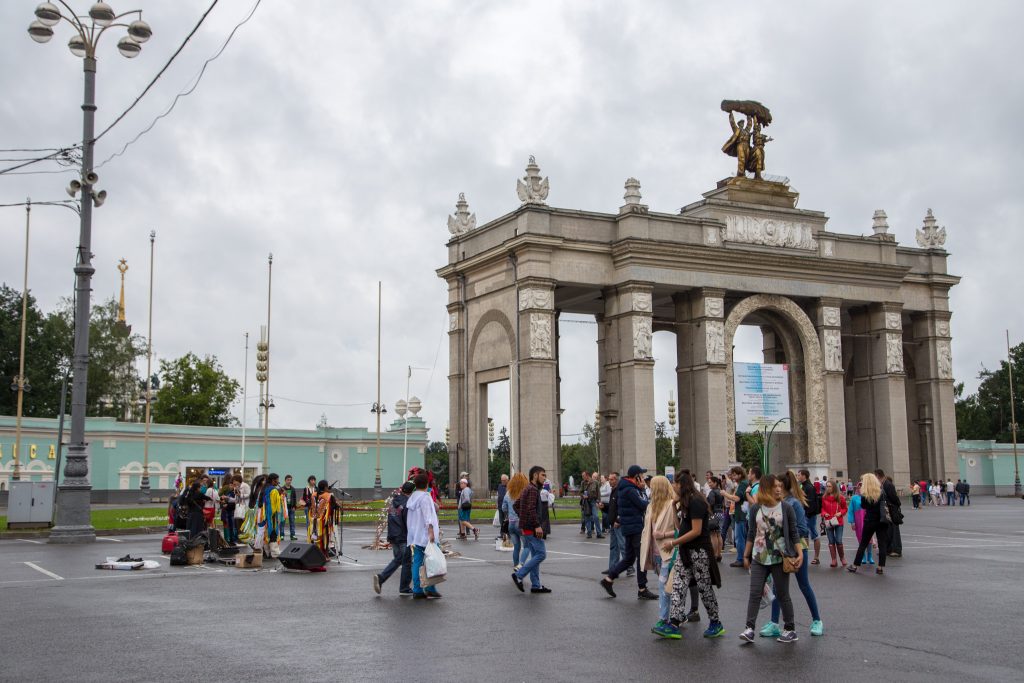
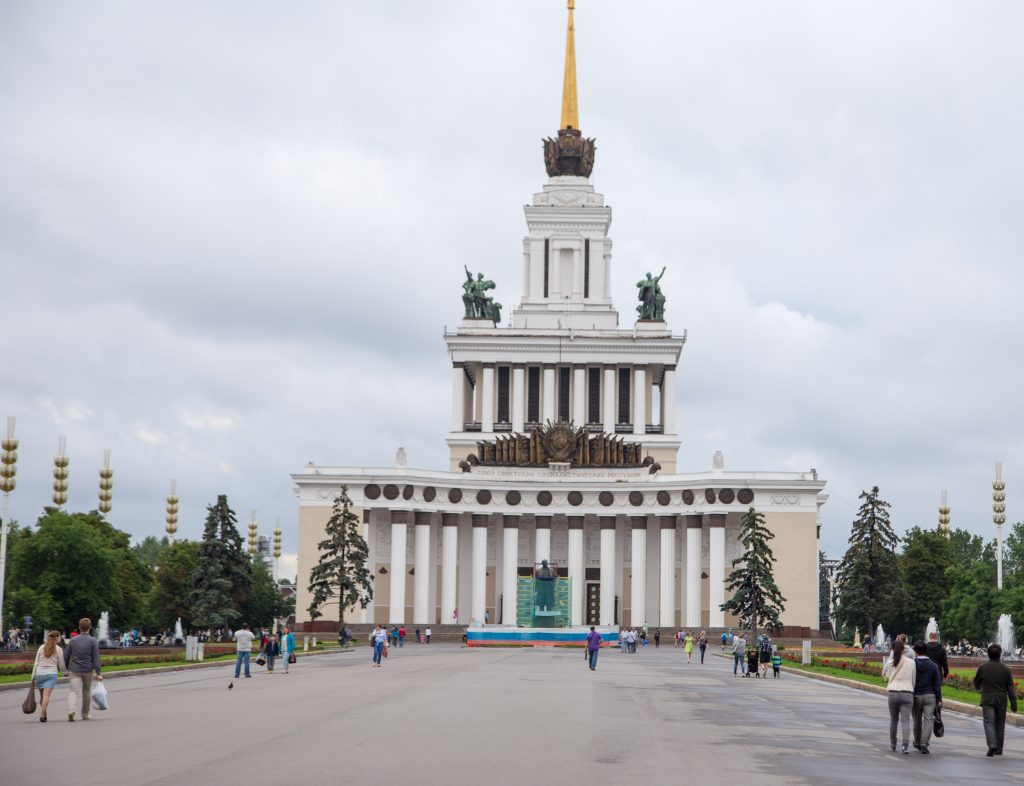




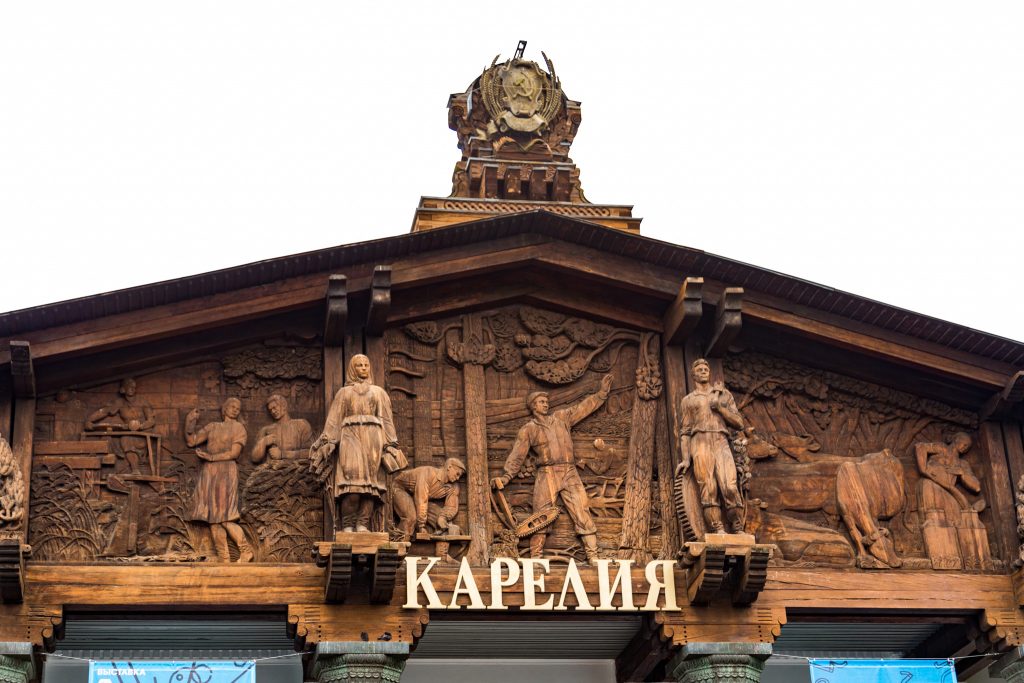


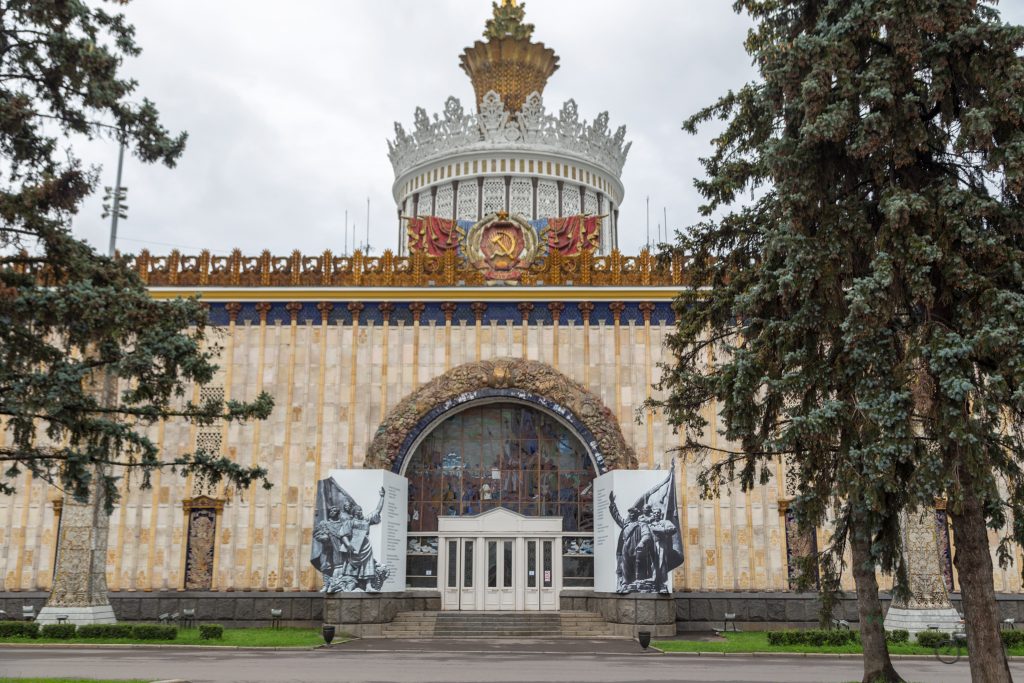


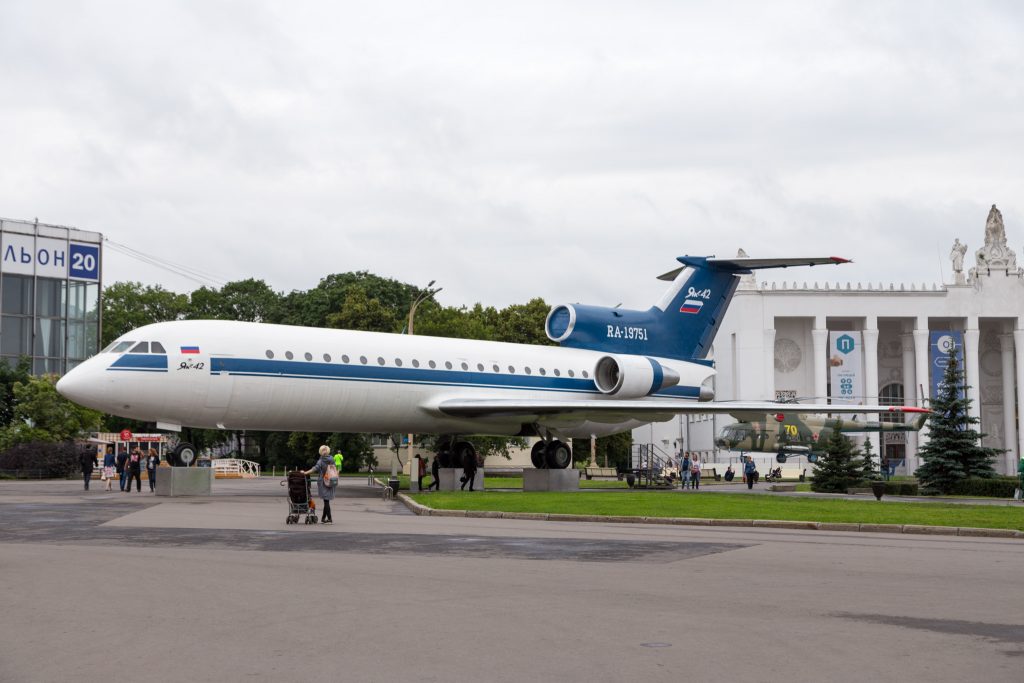
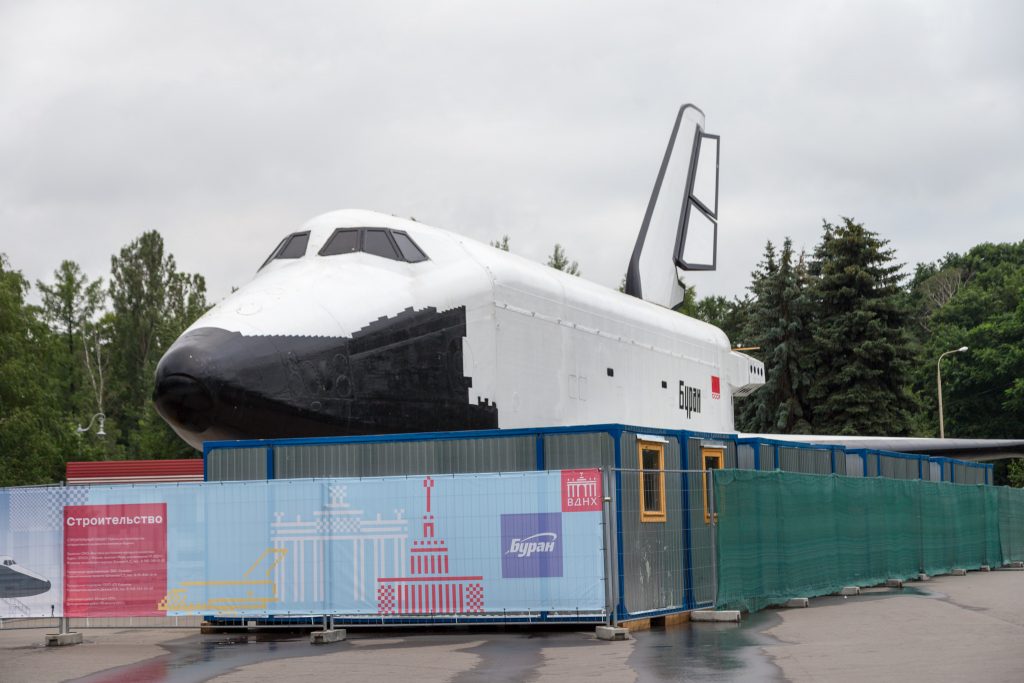
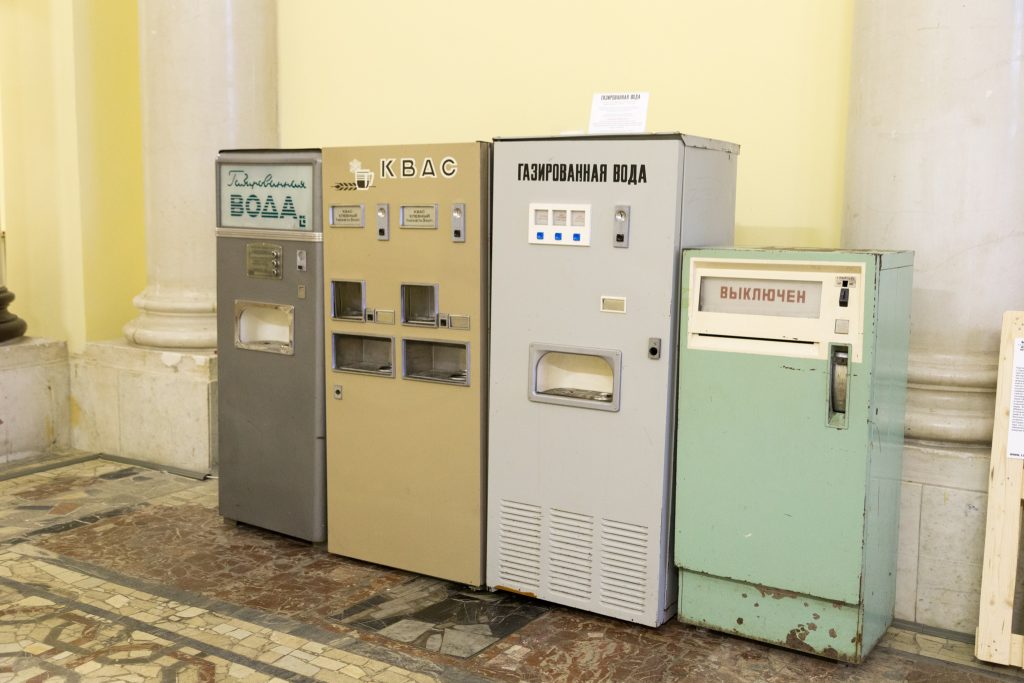
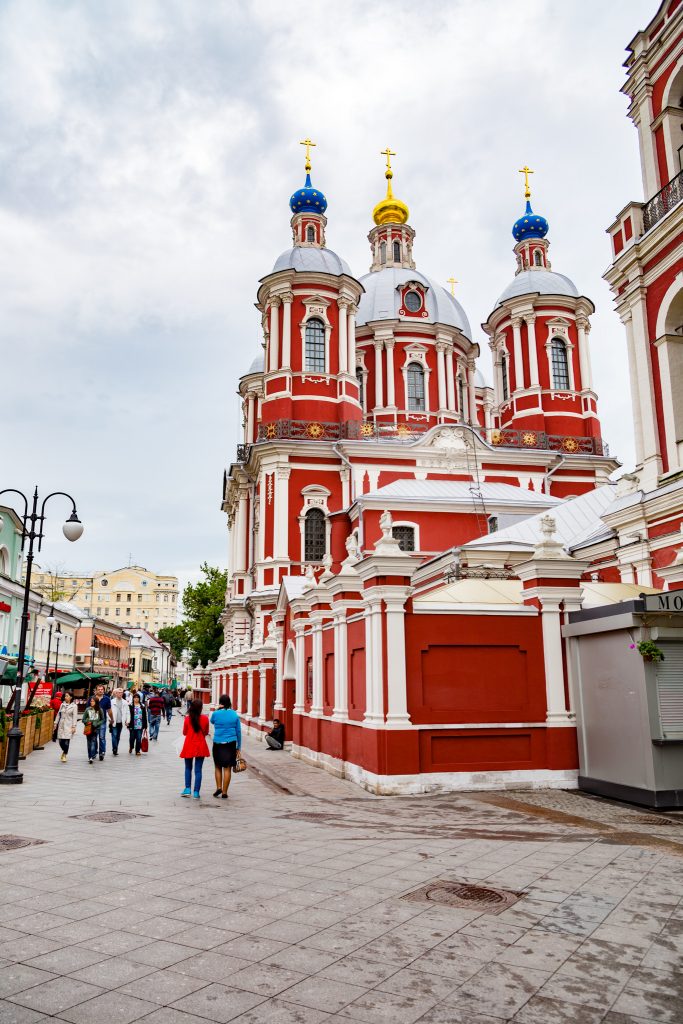


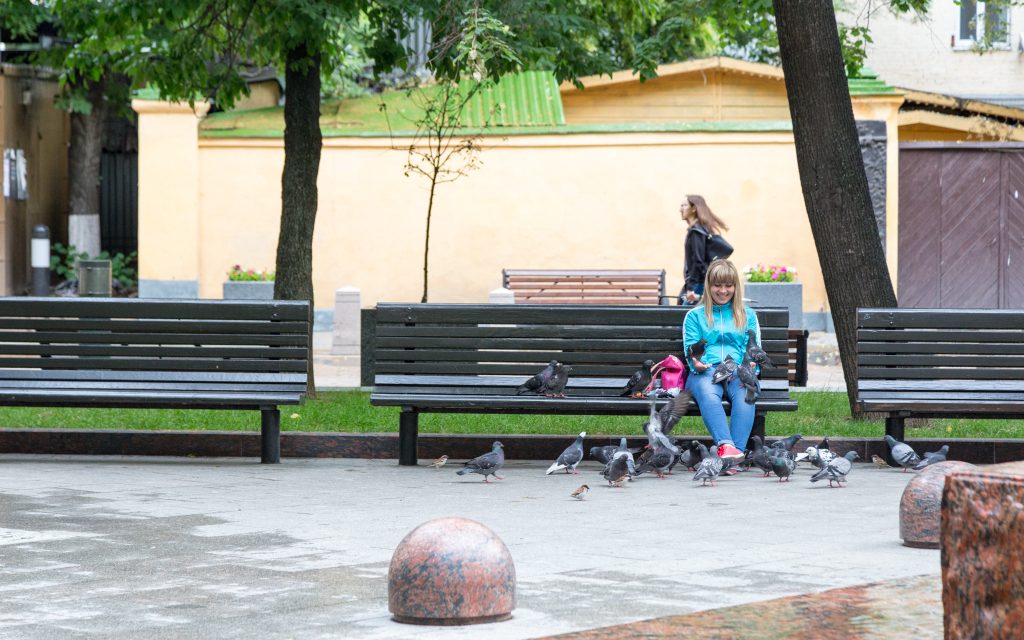
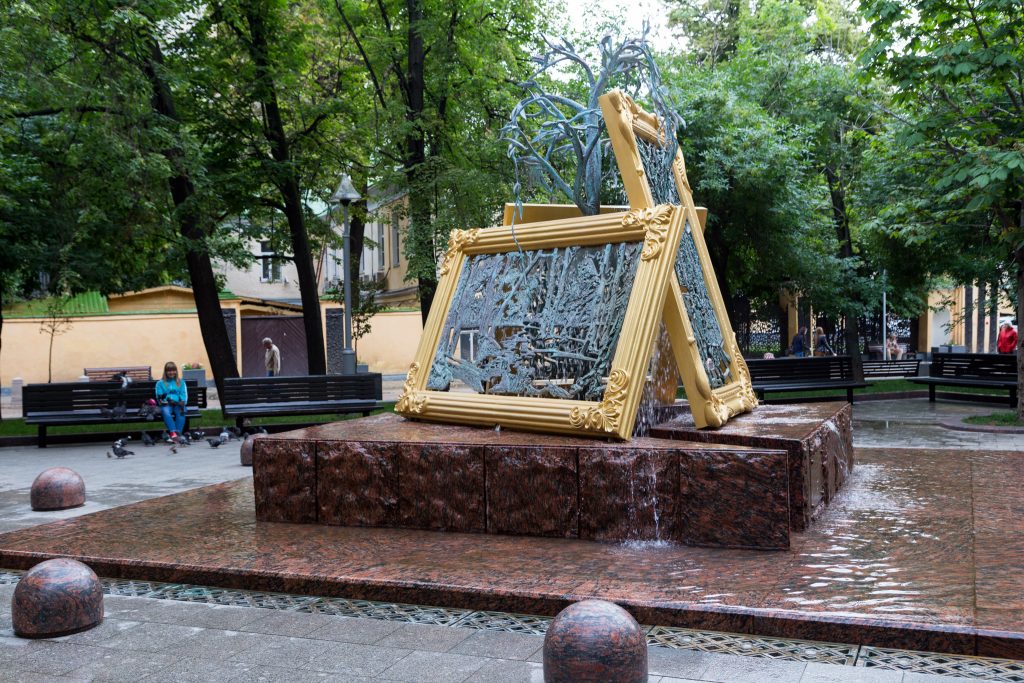

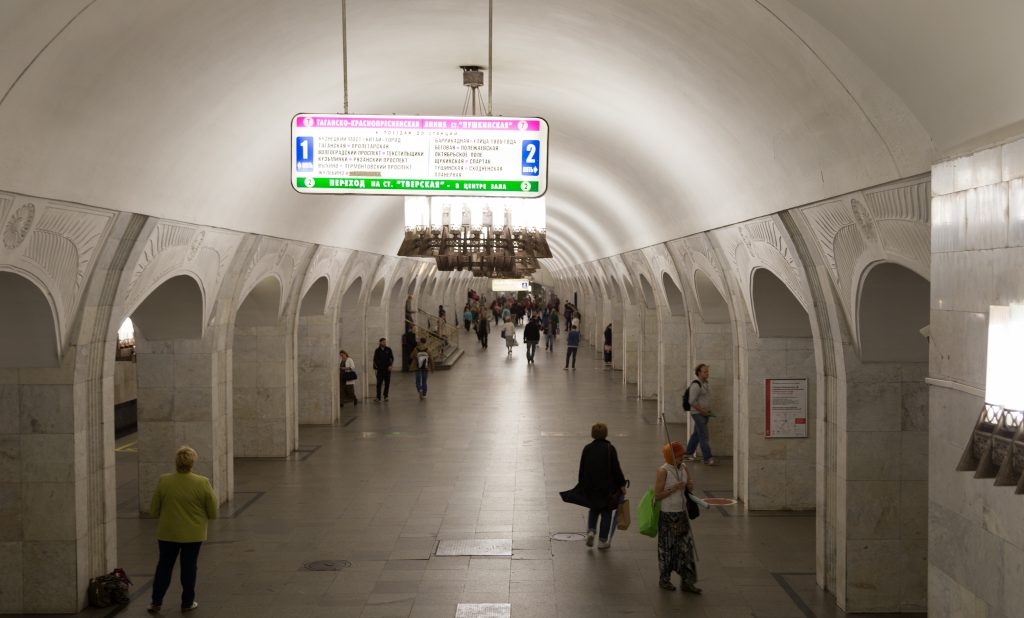
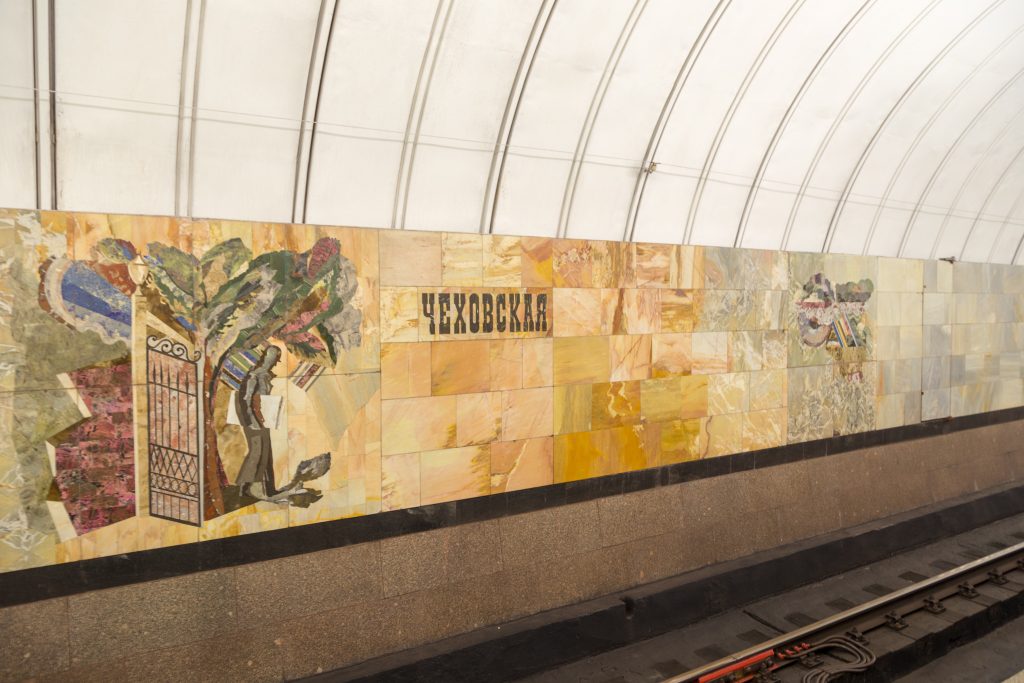
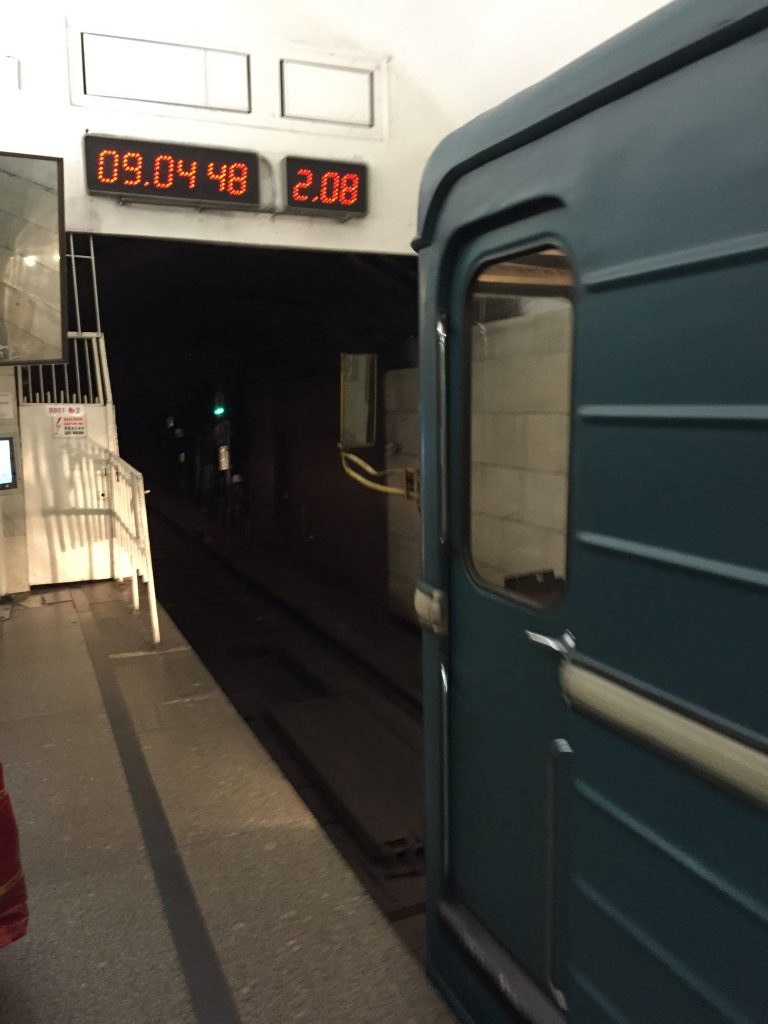
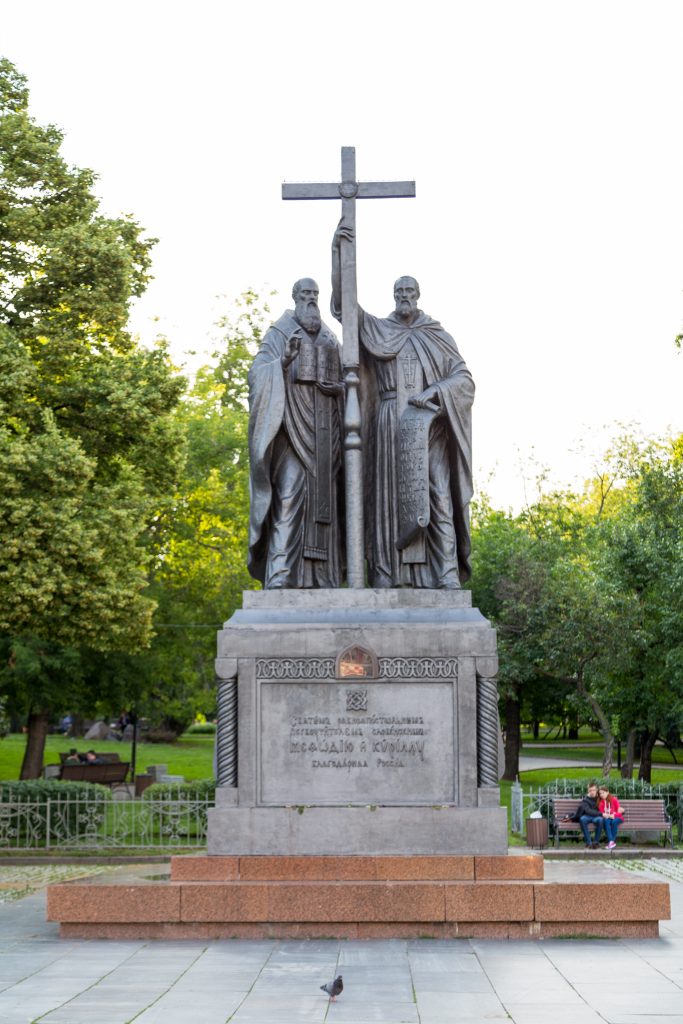
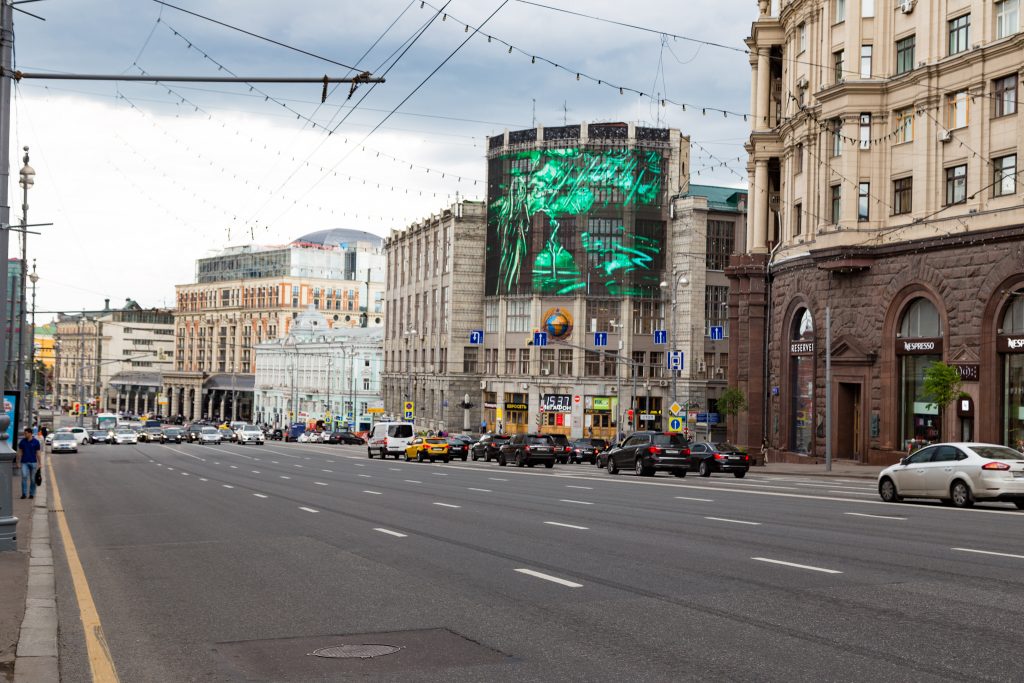
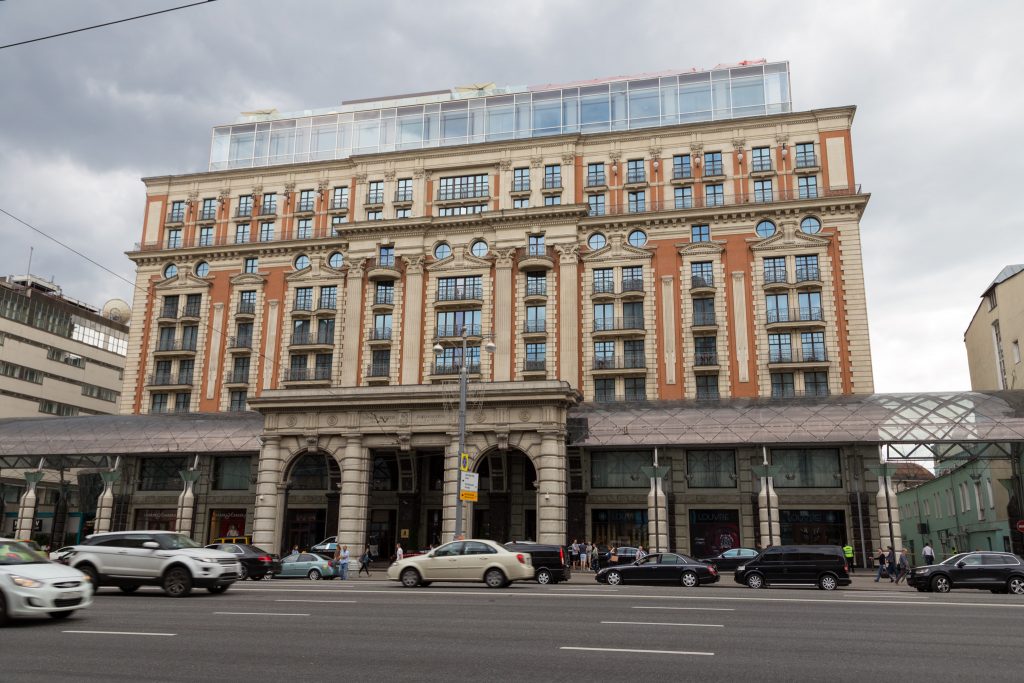
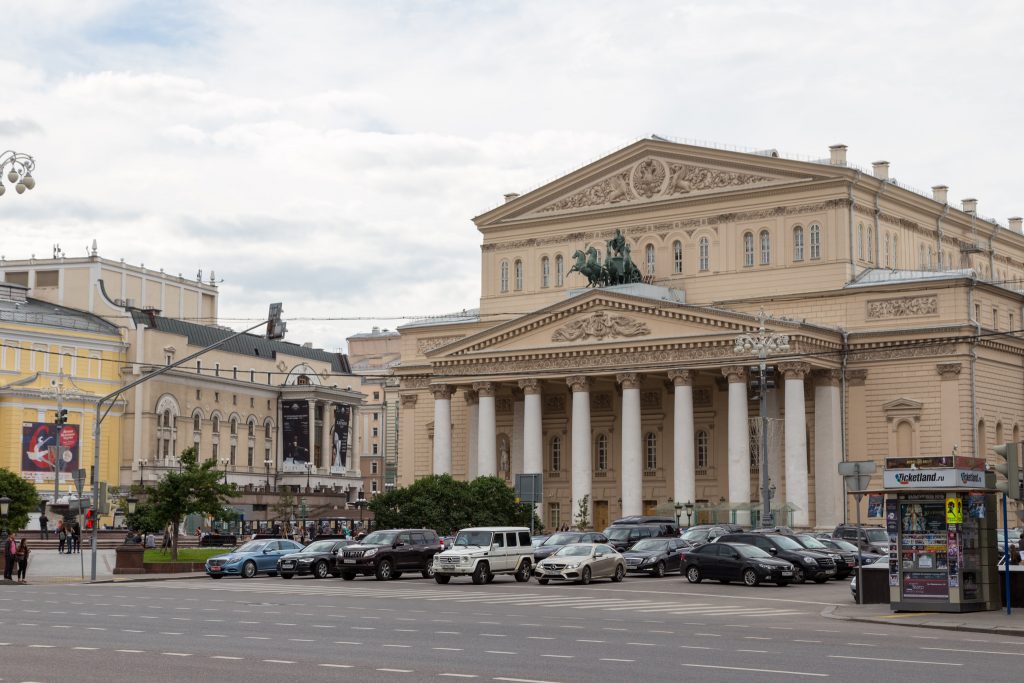

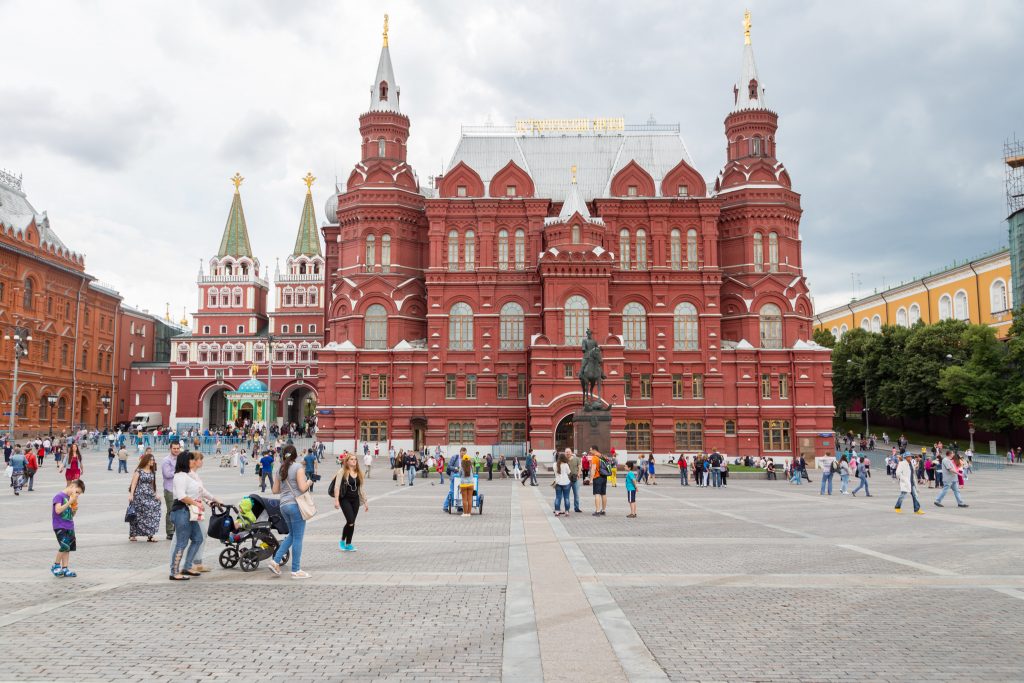

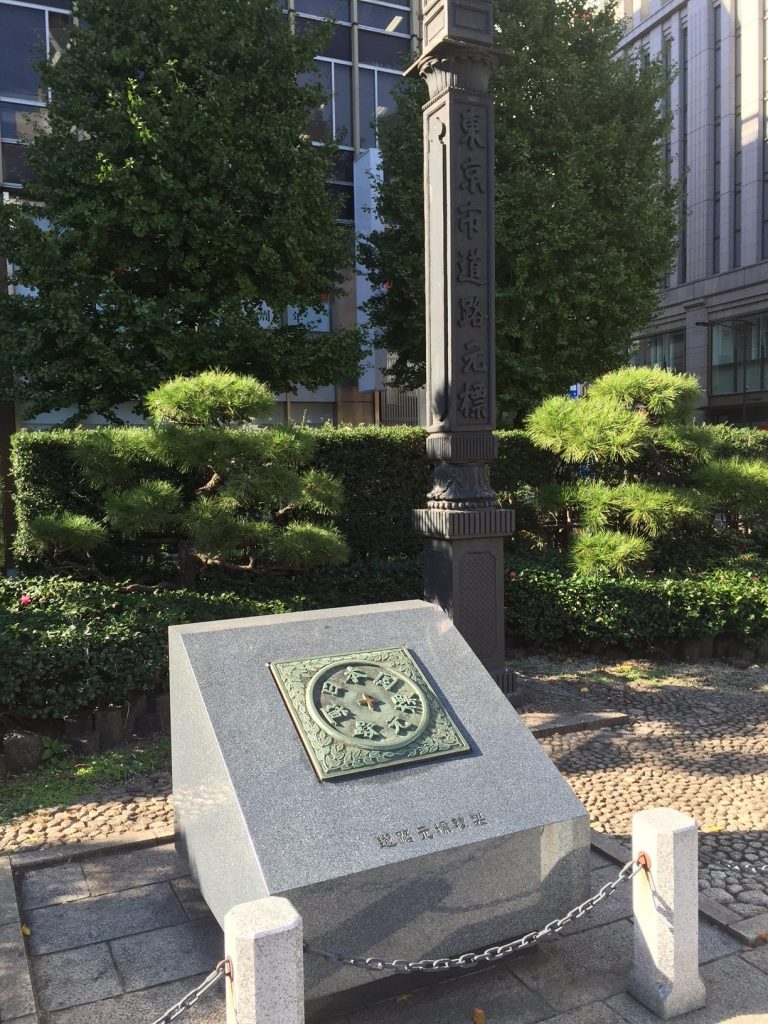

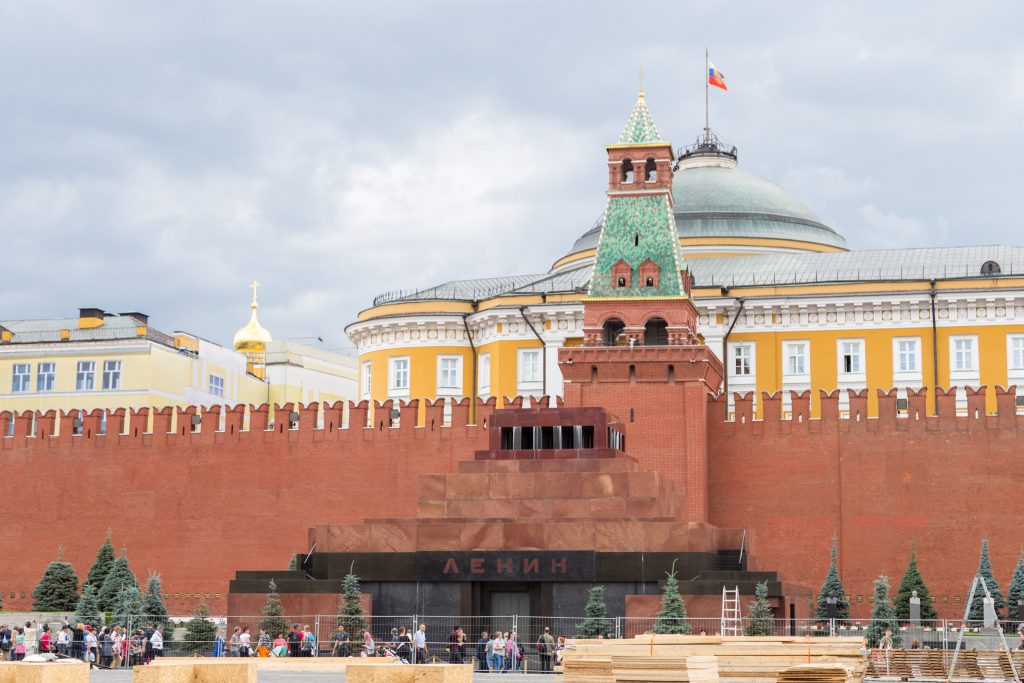
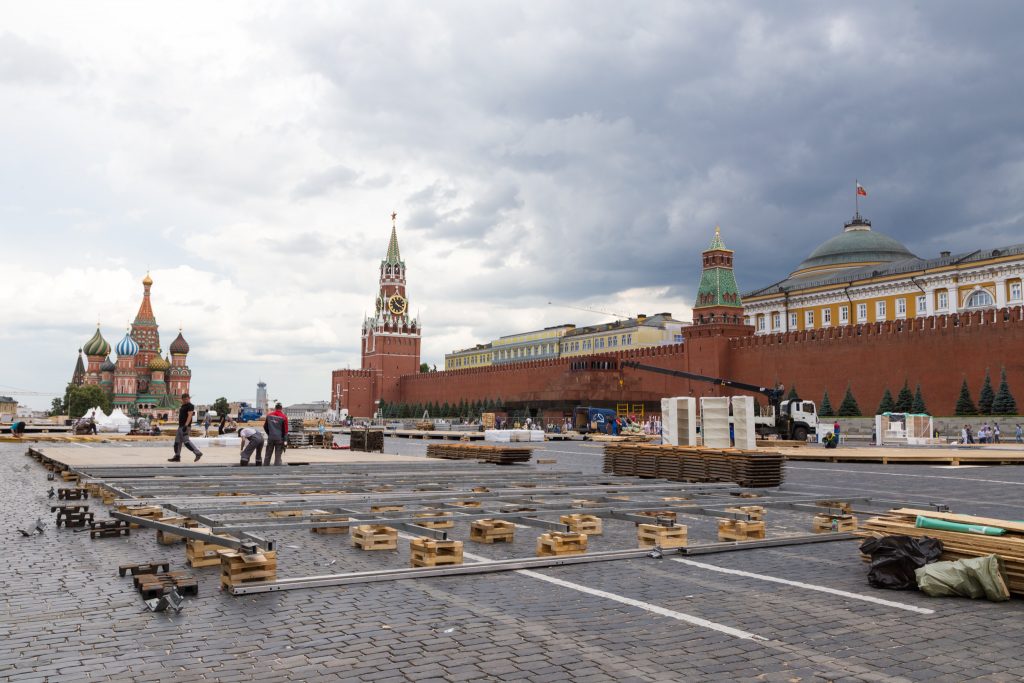
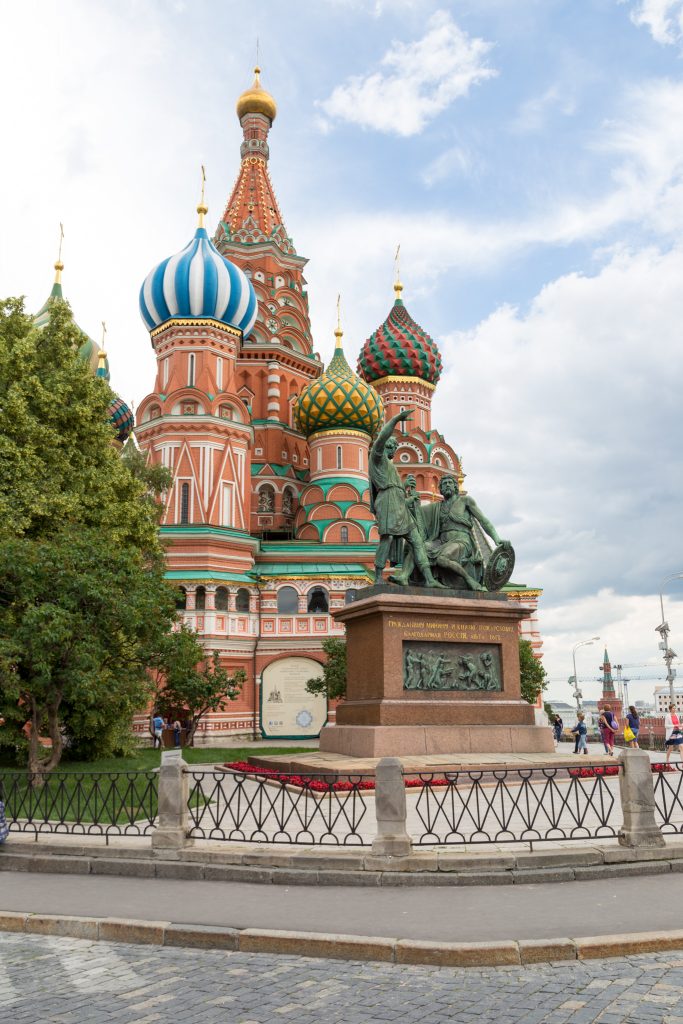
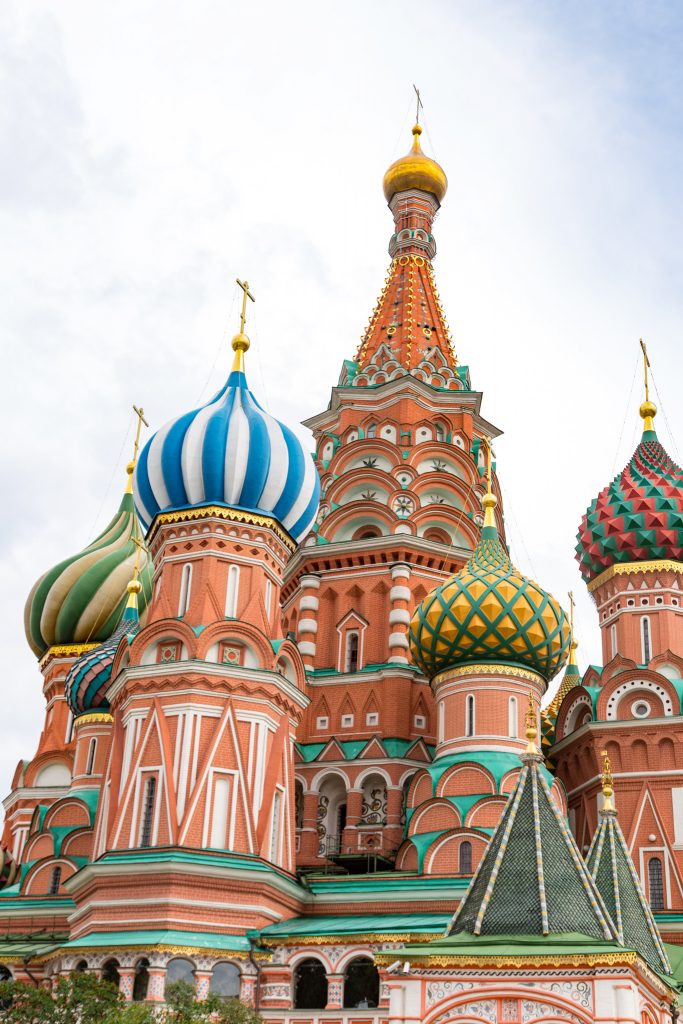
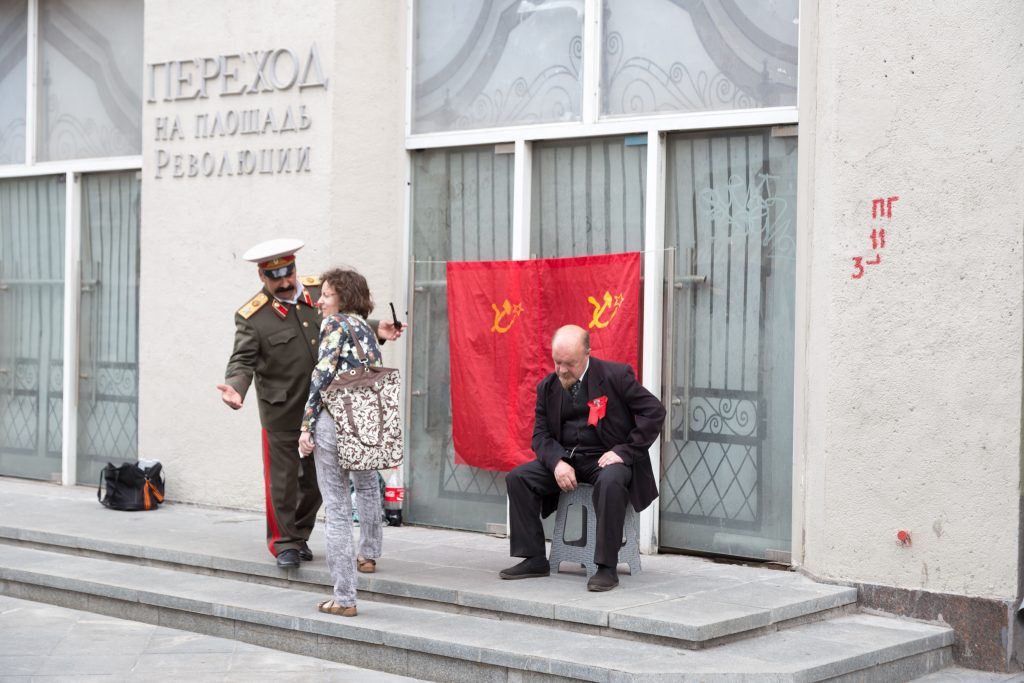
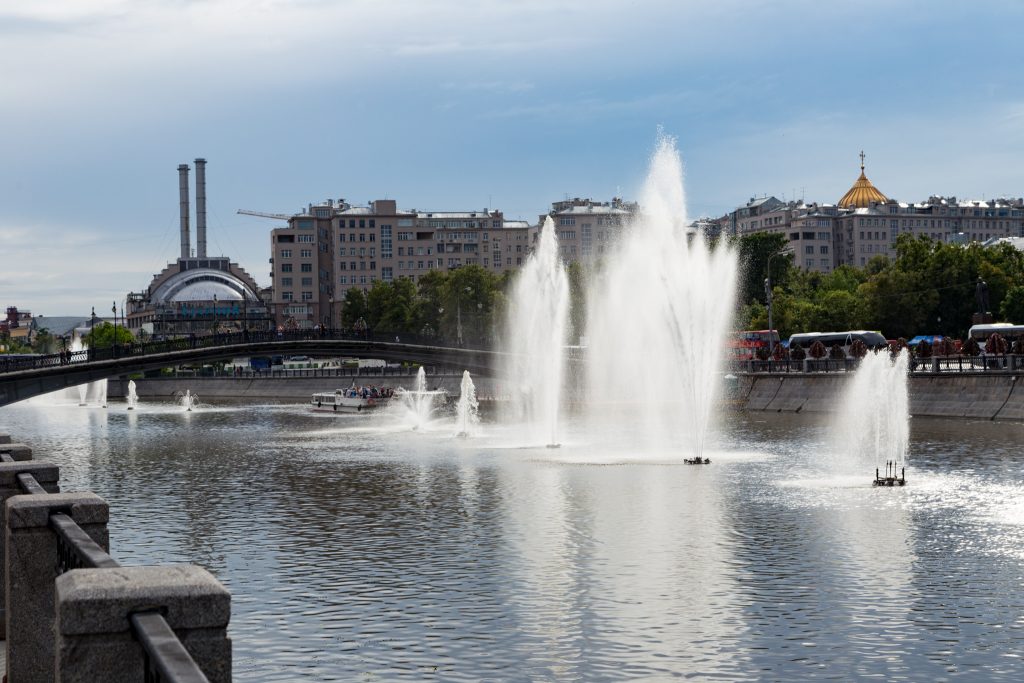
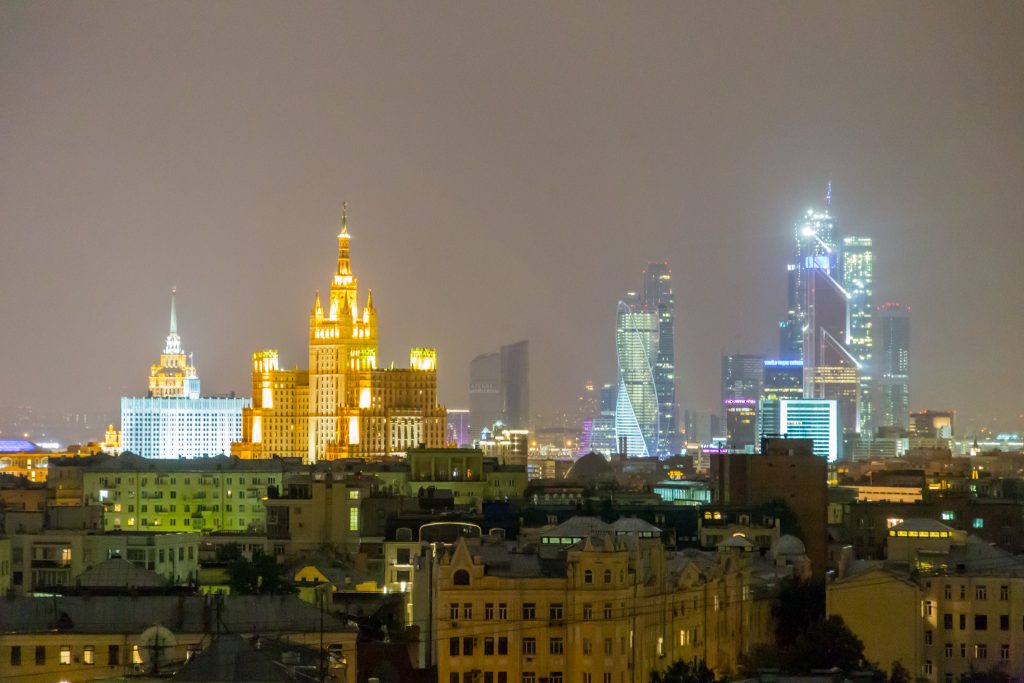
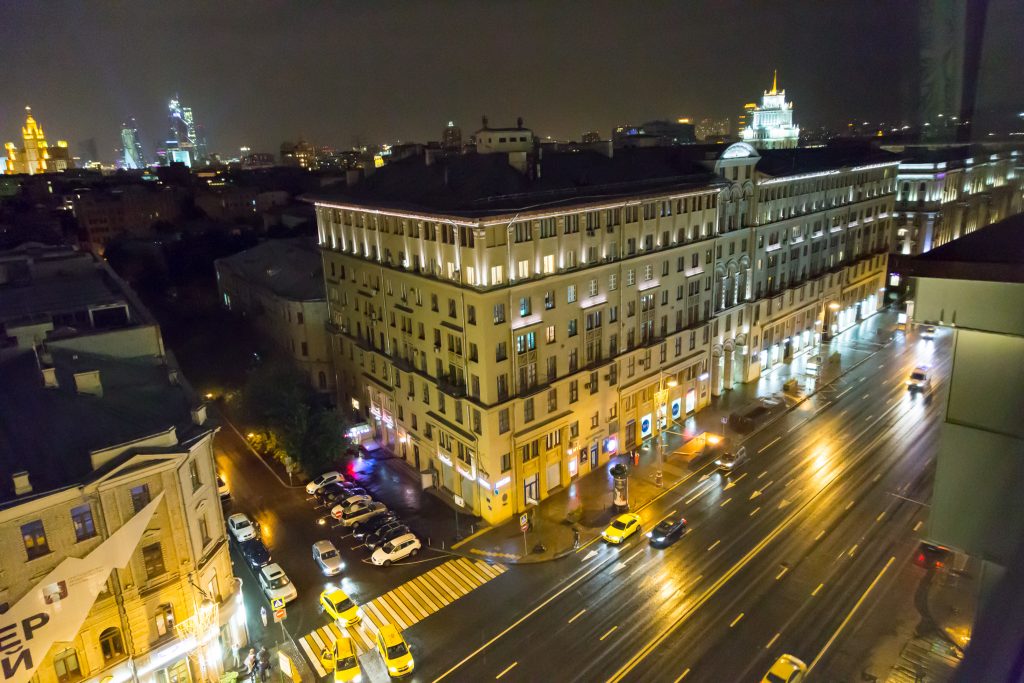

You must log in to post a comment.